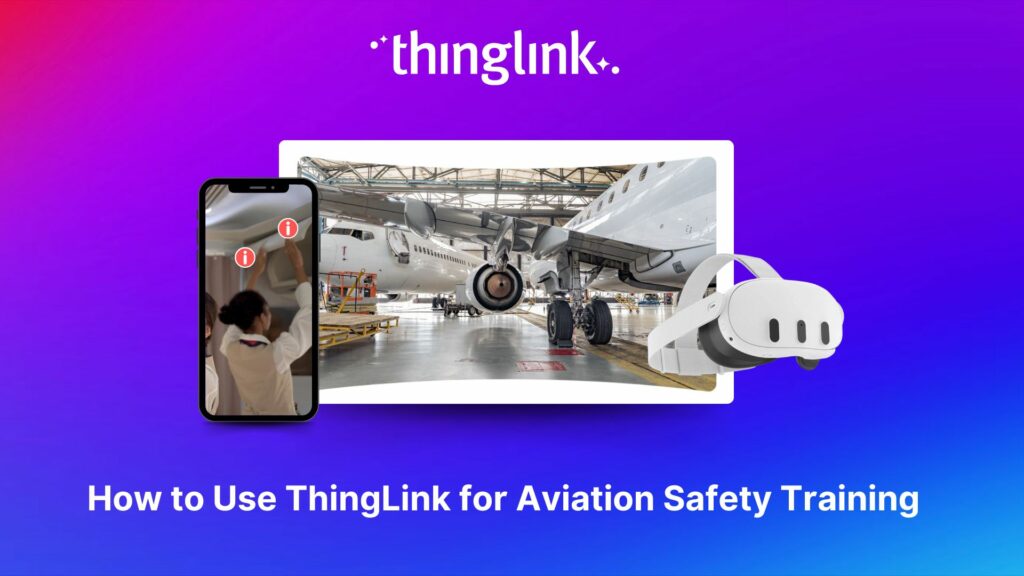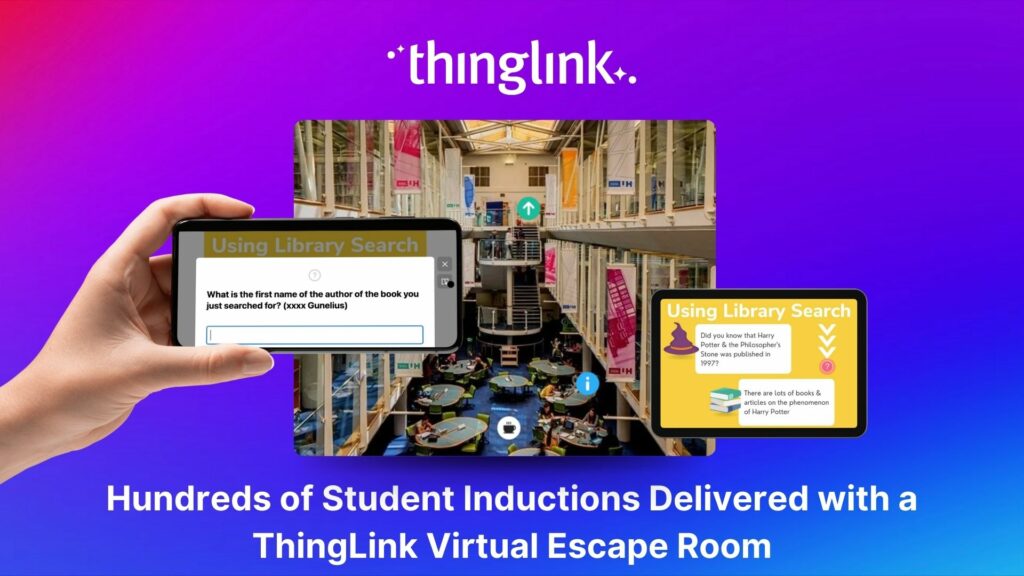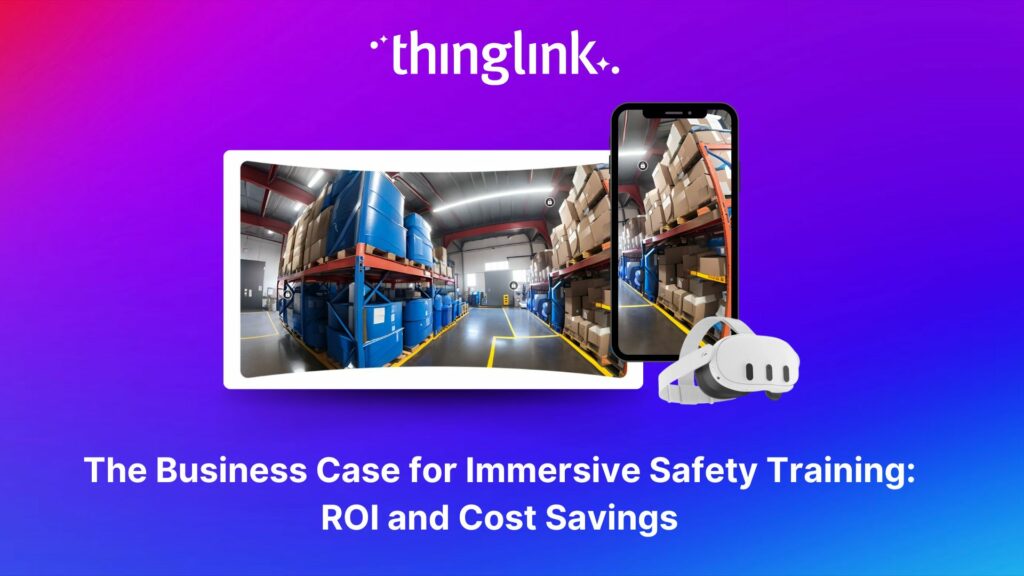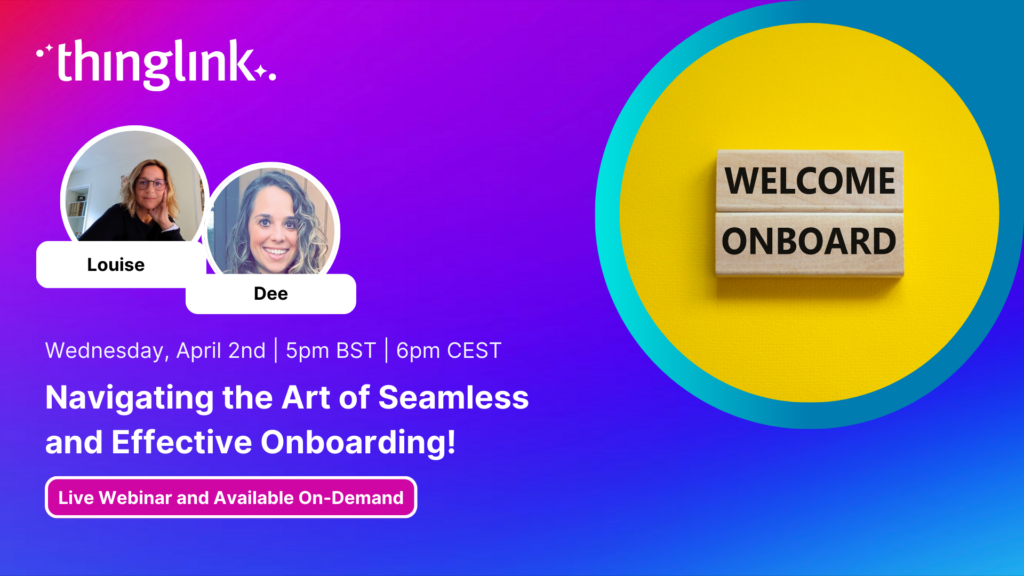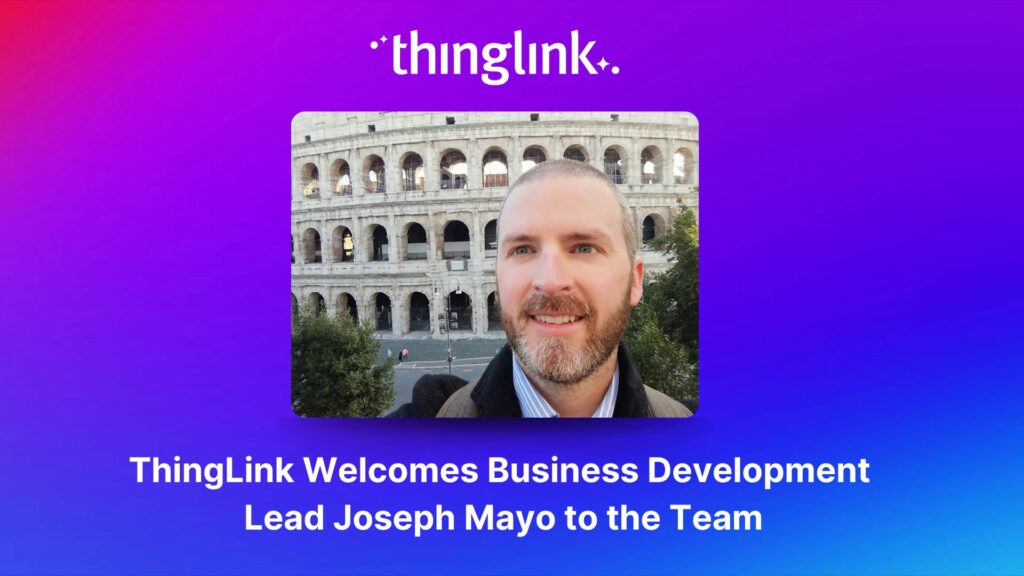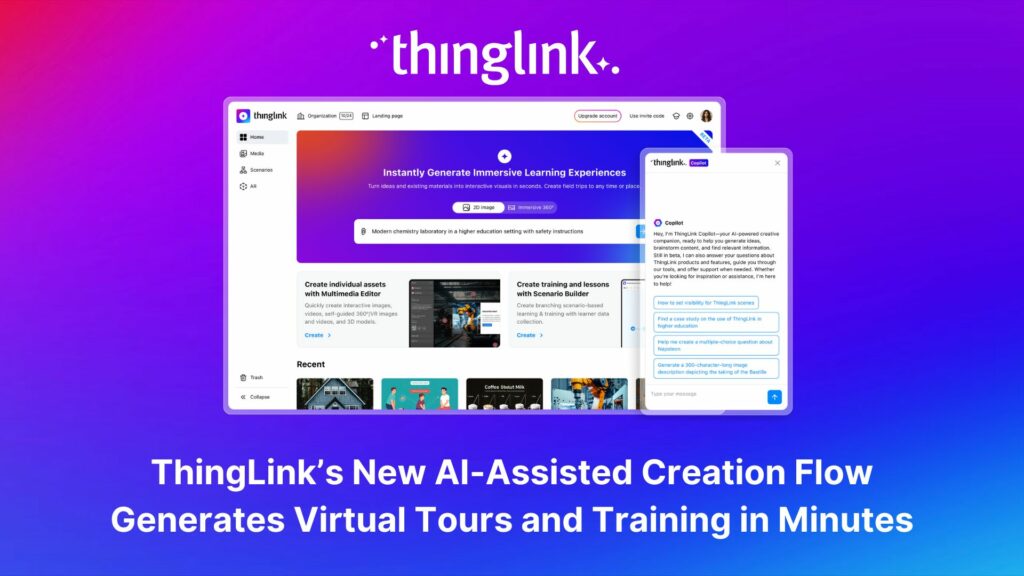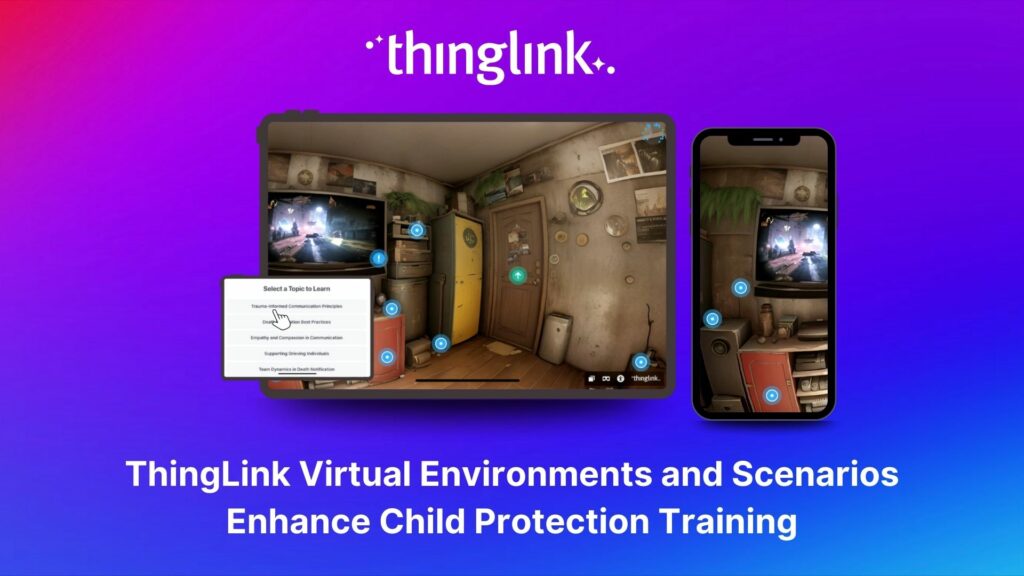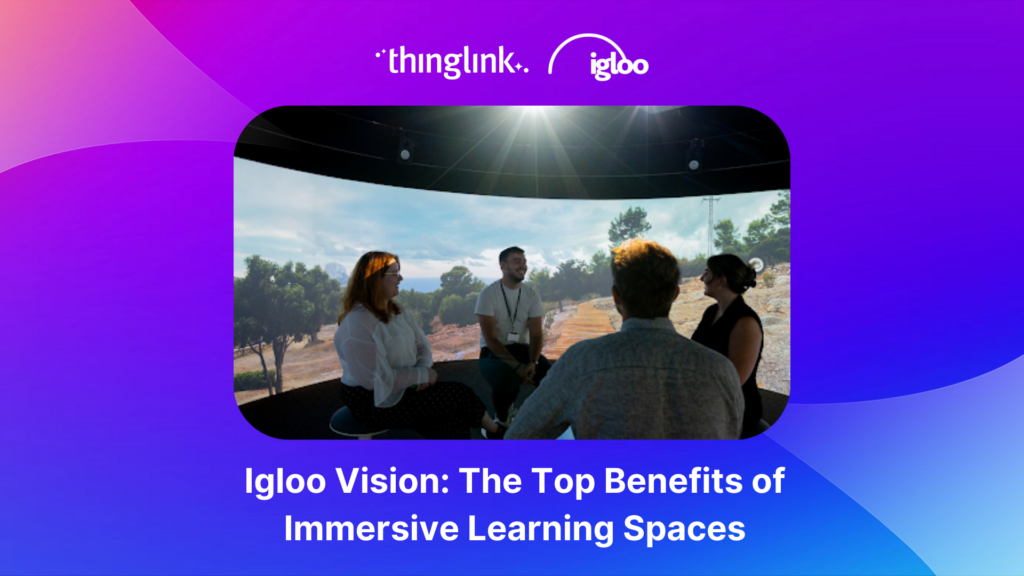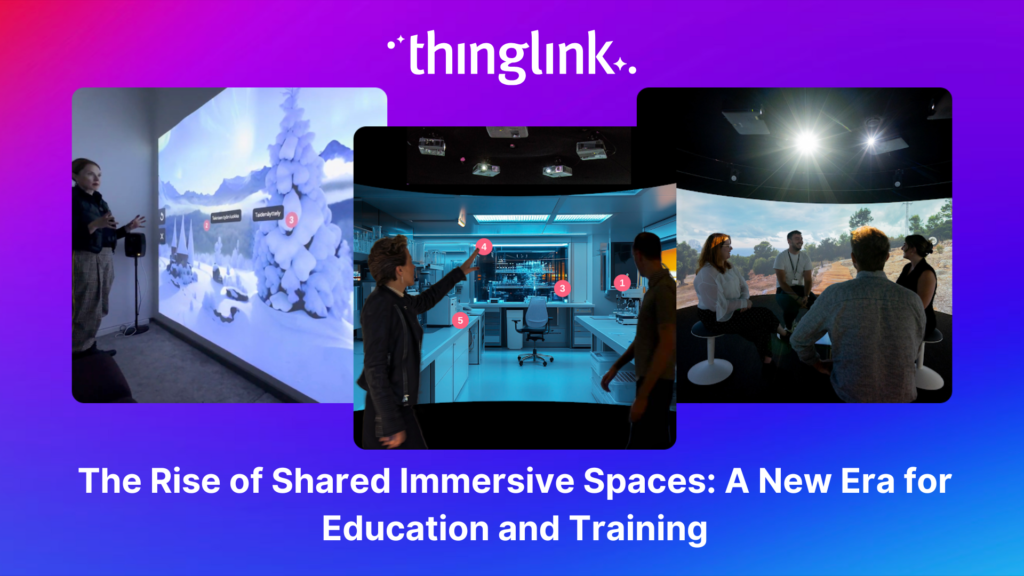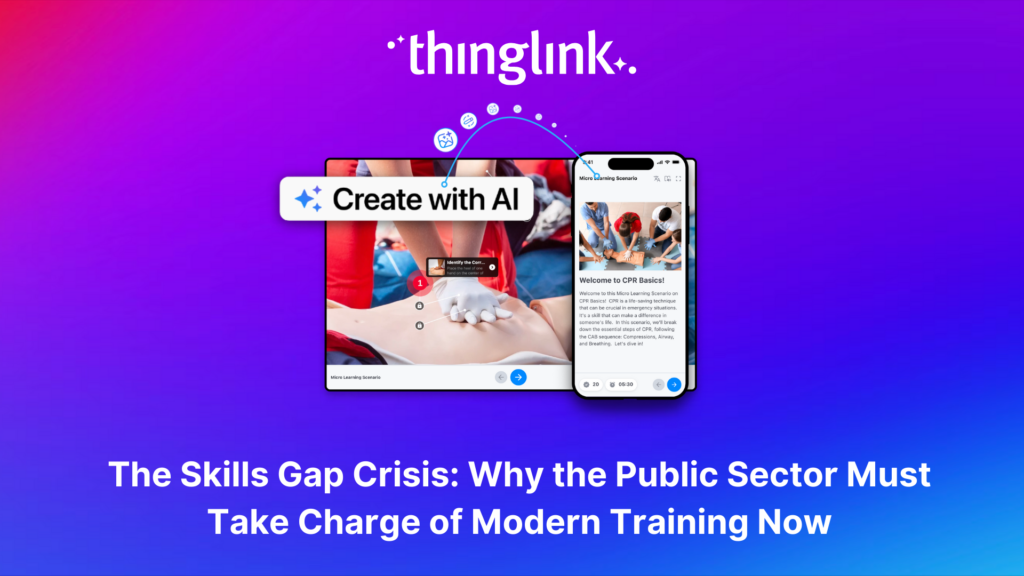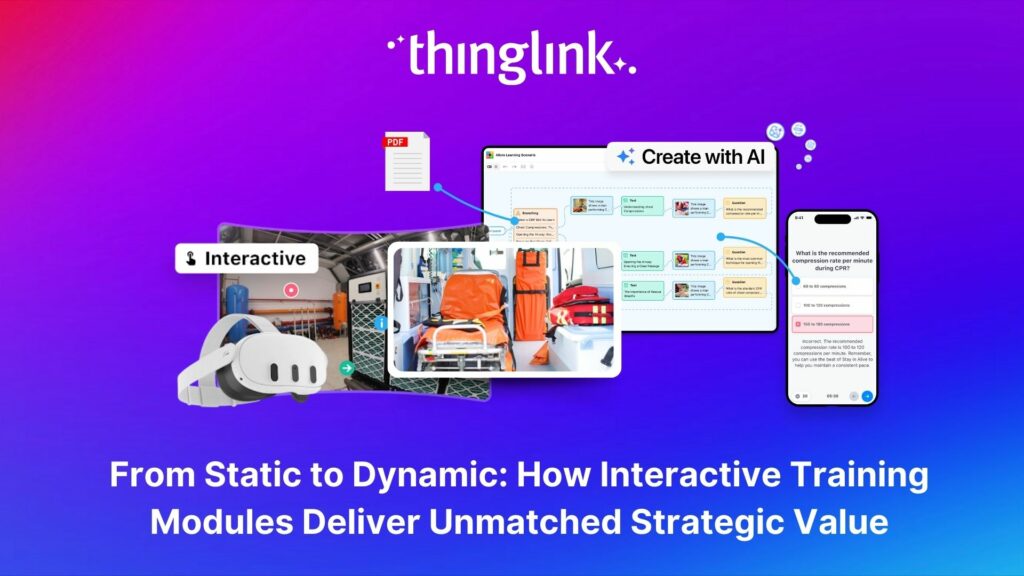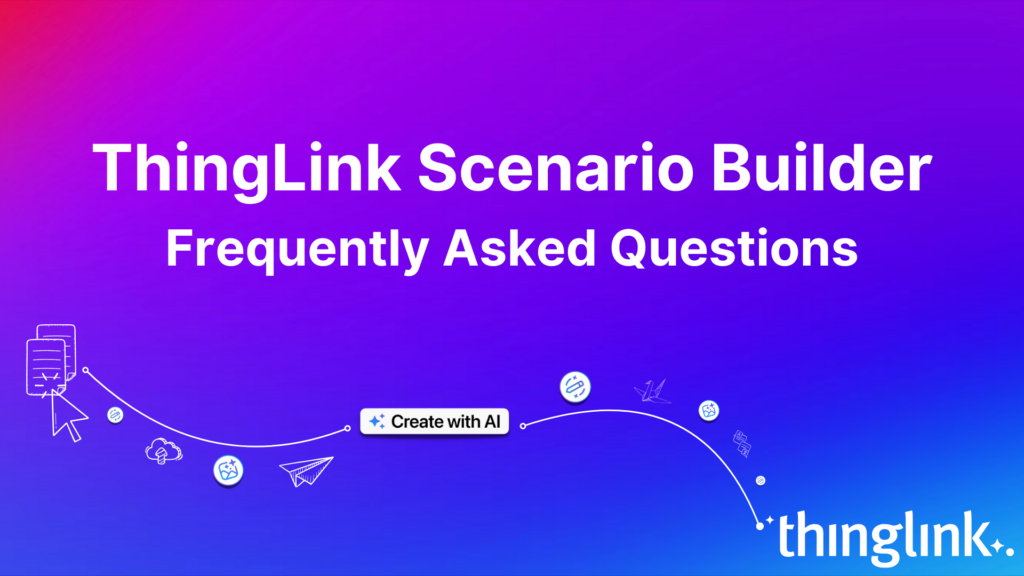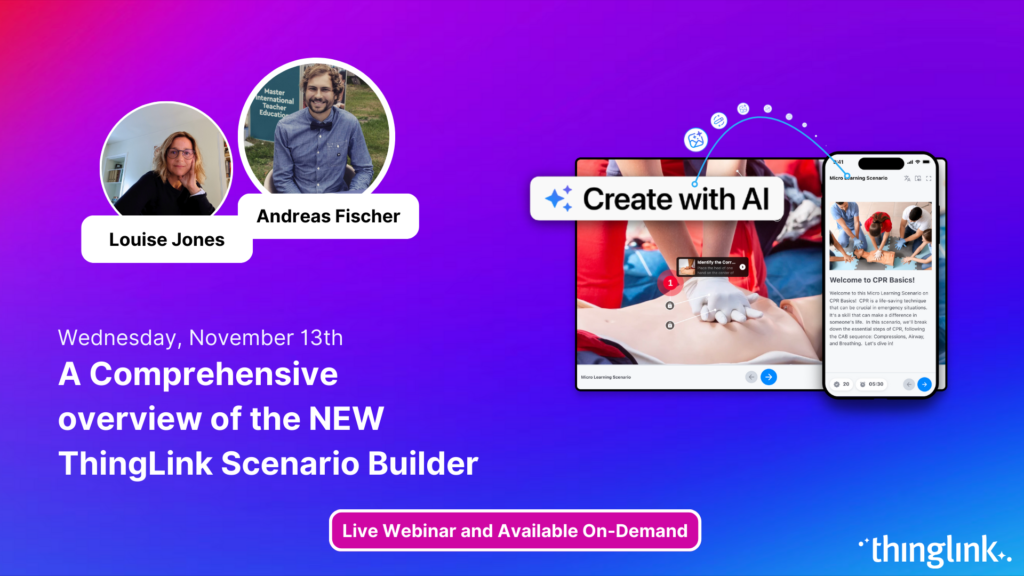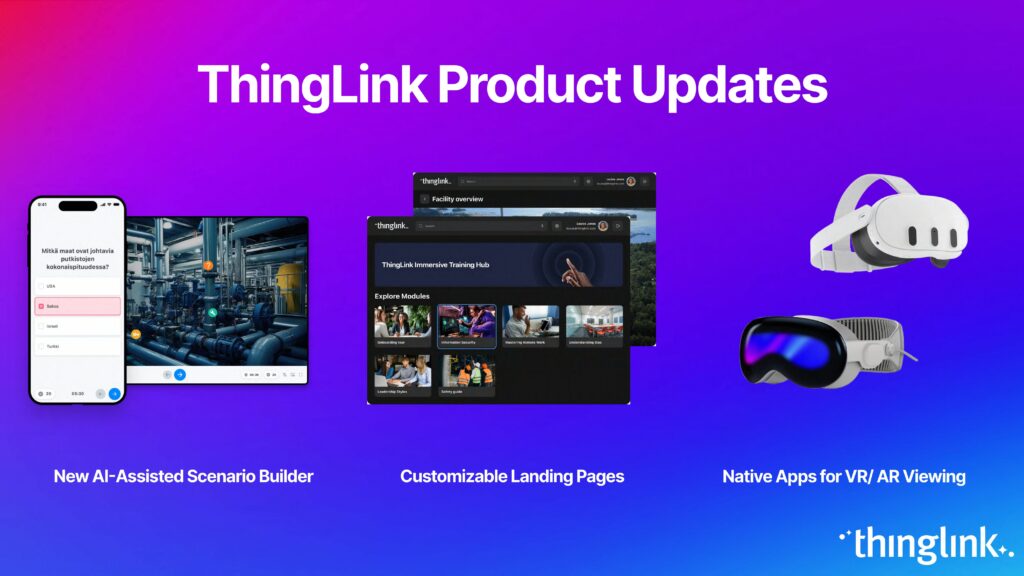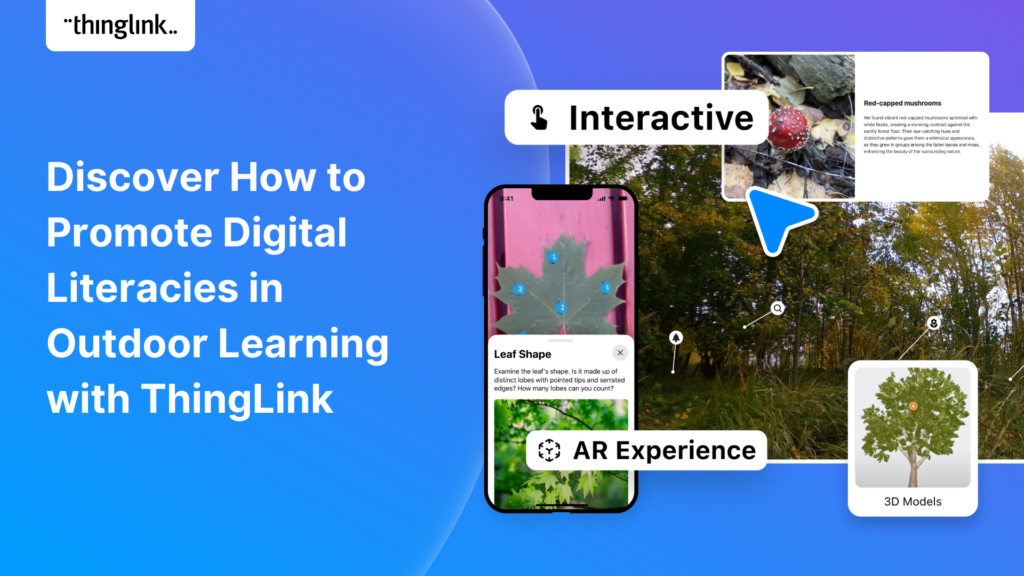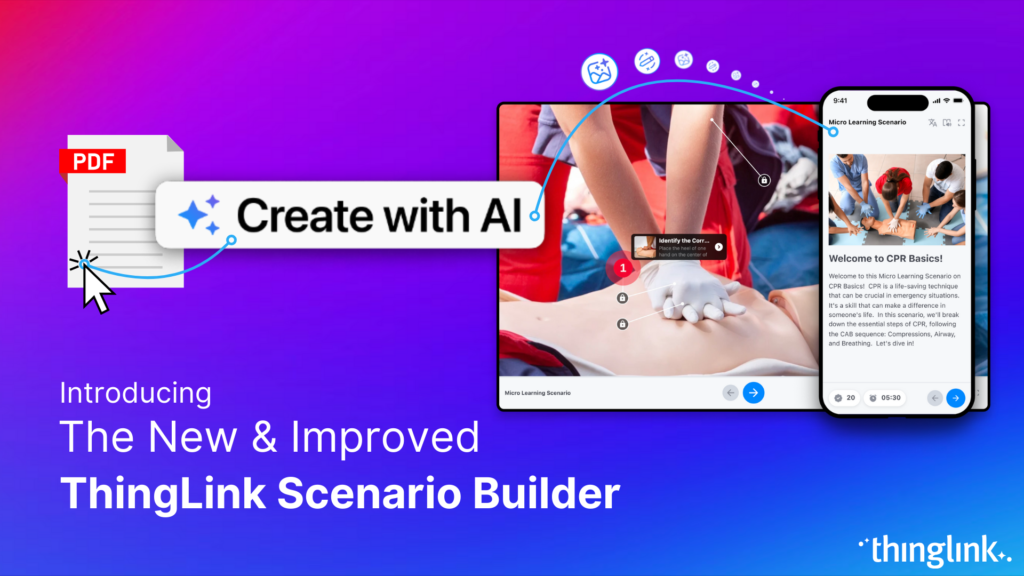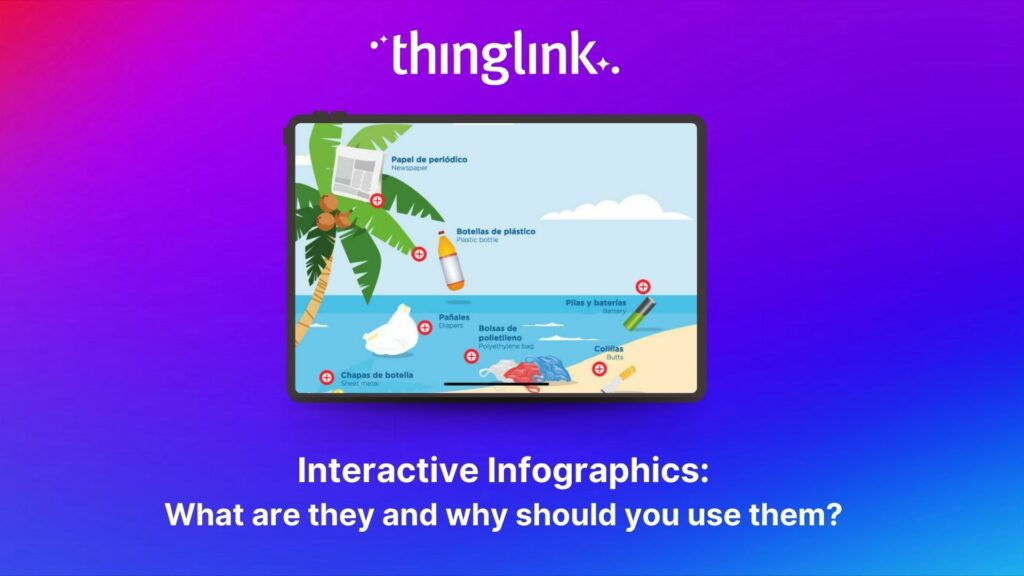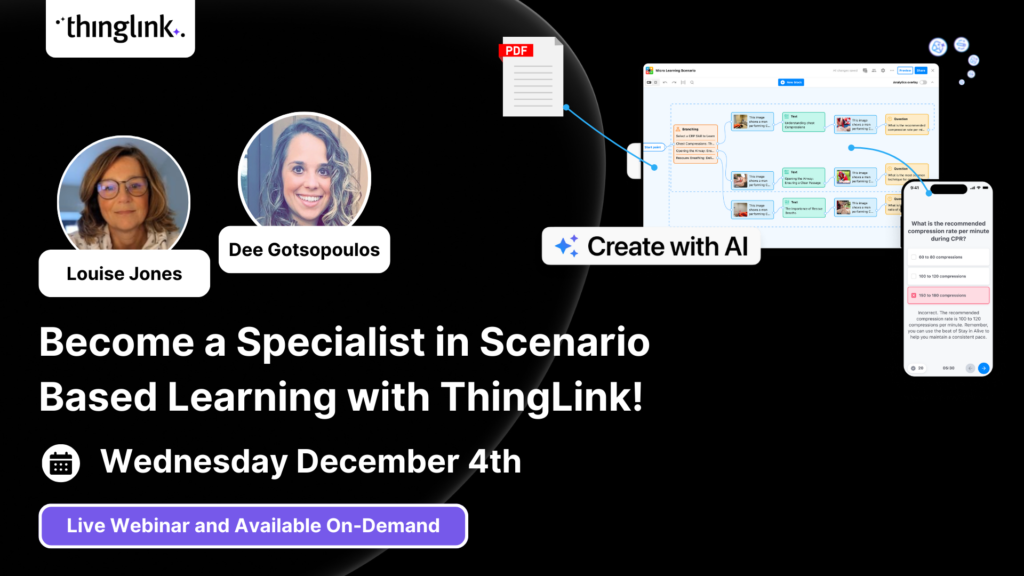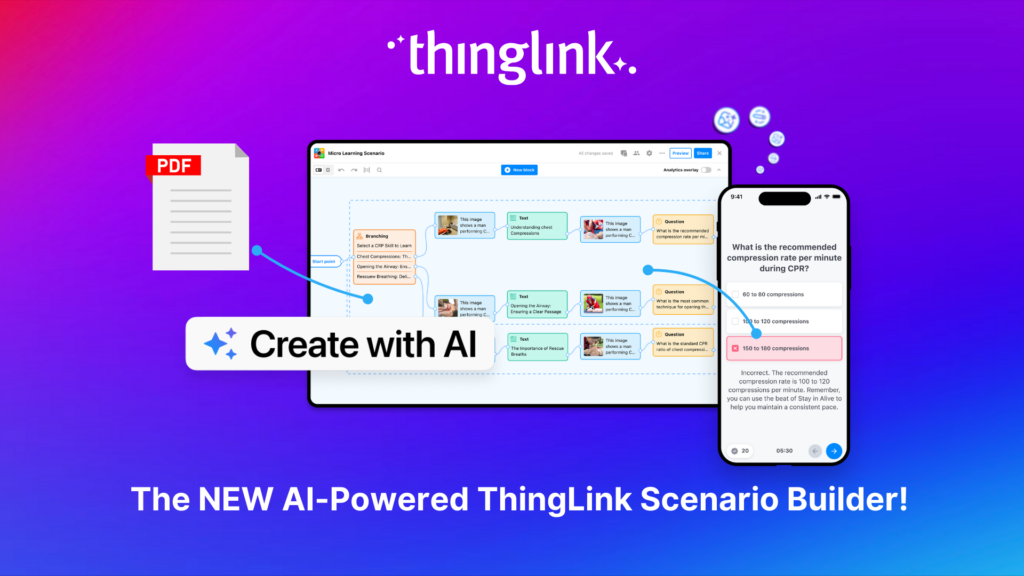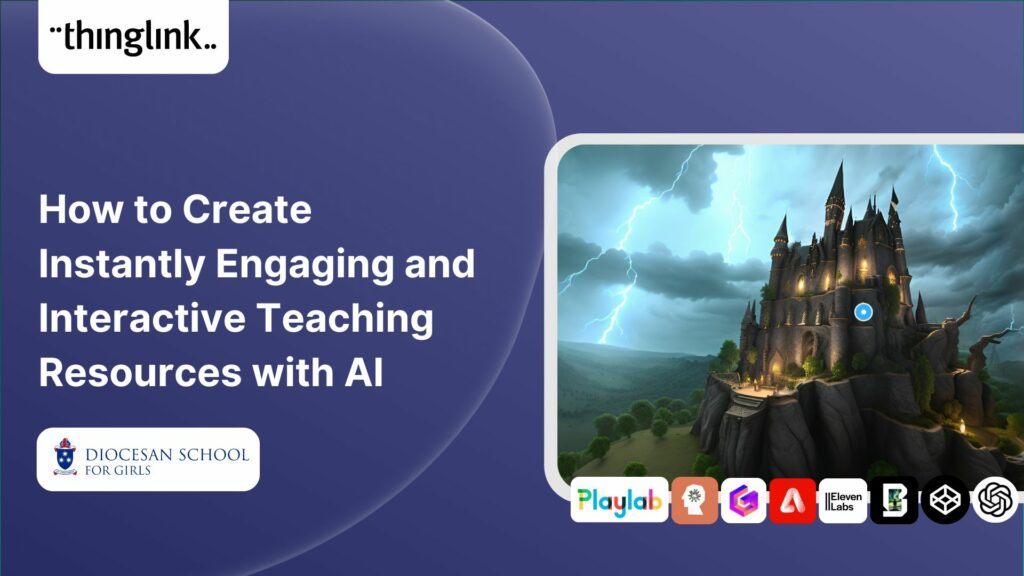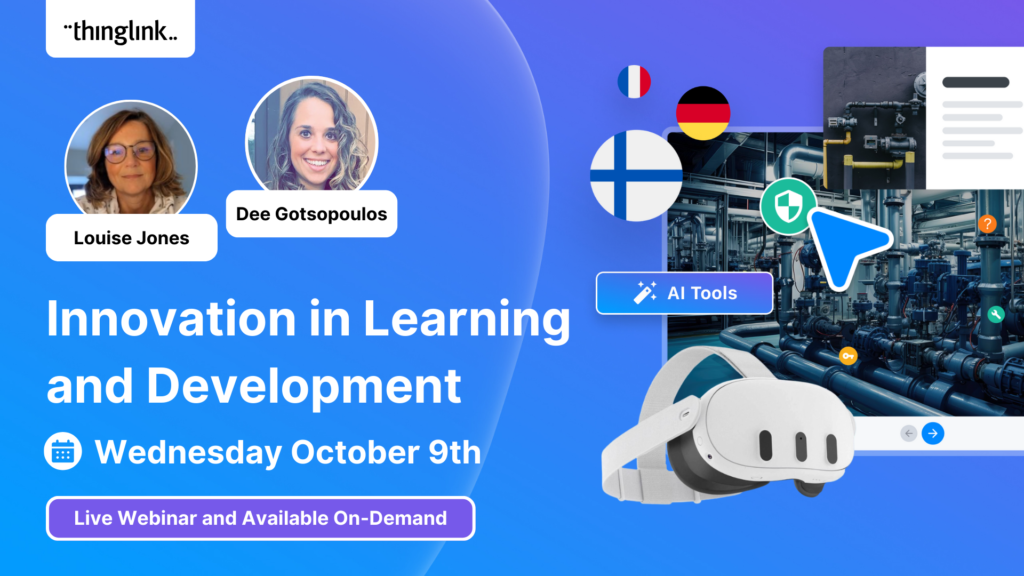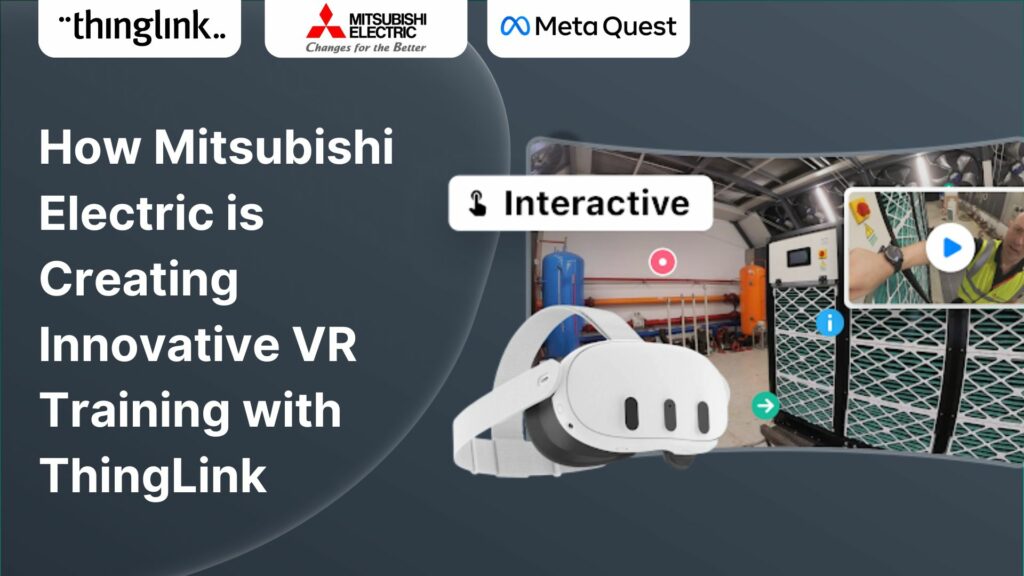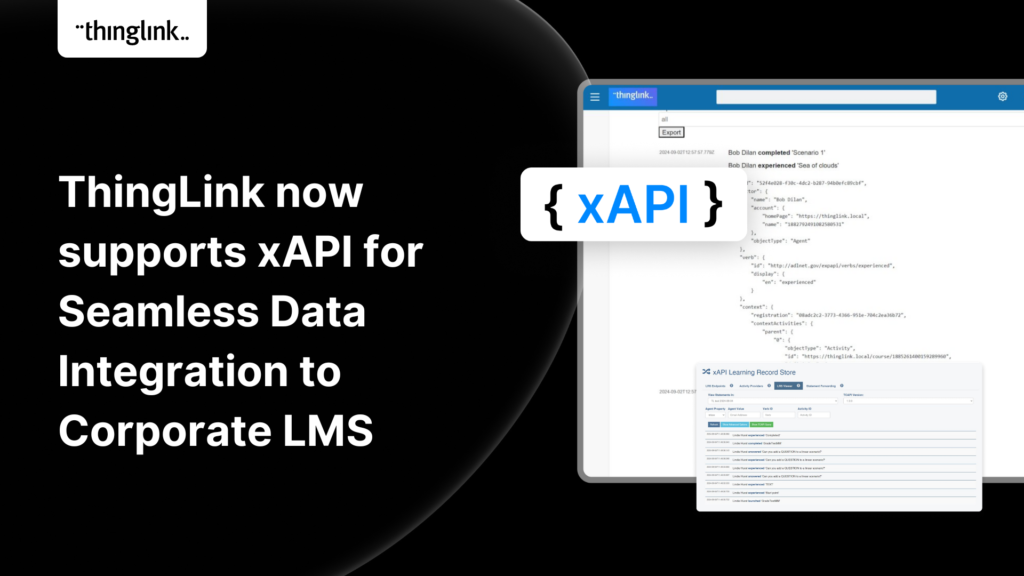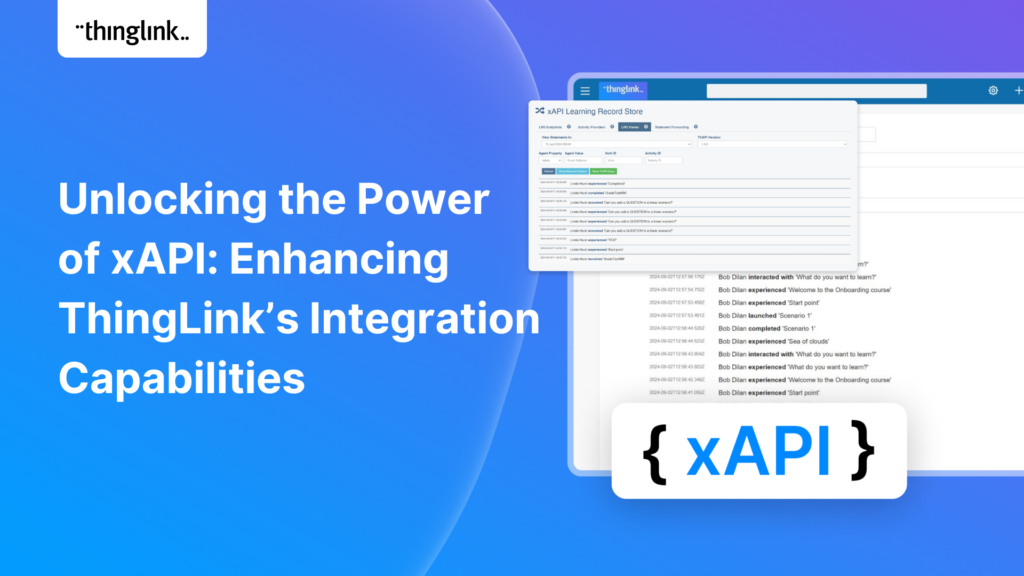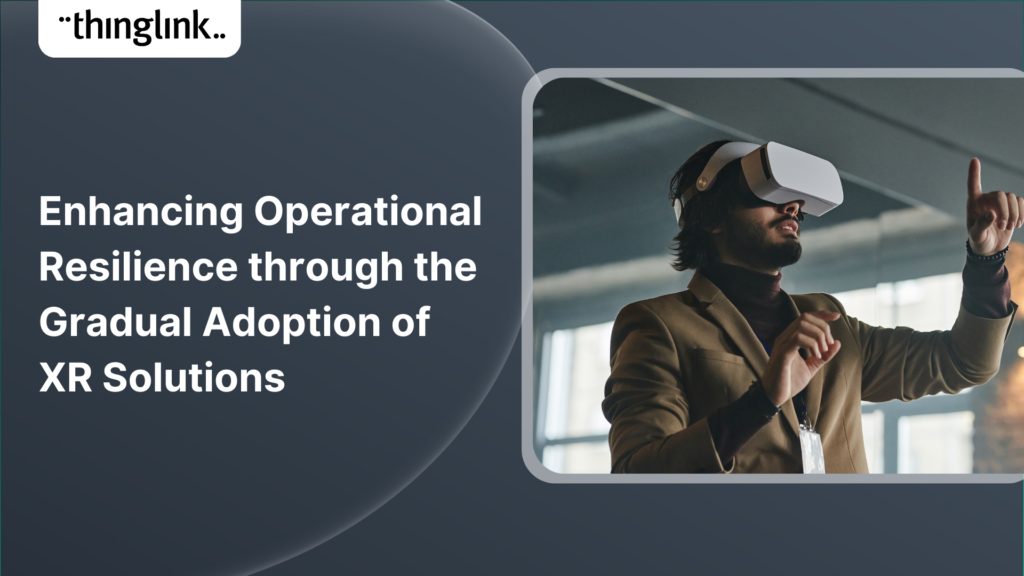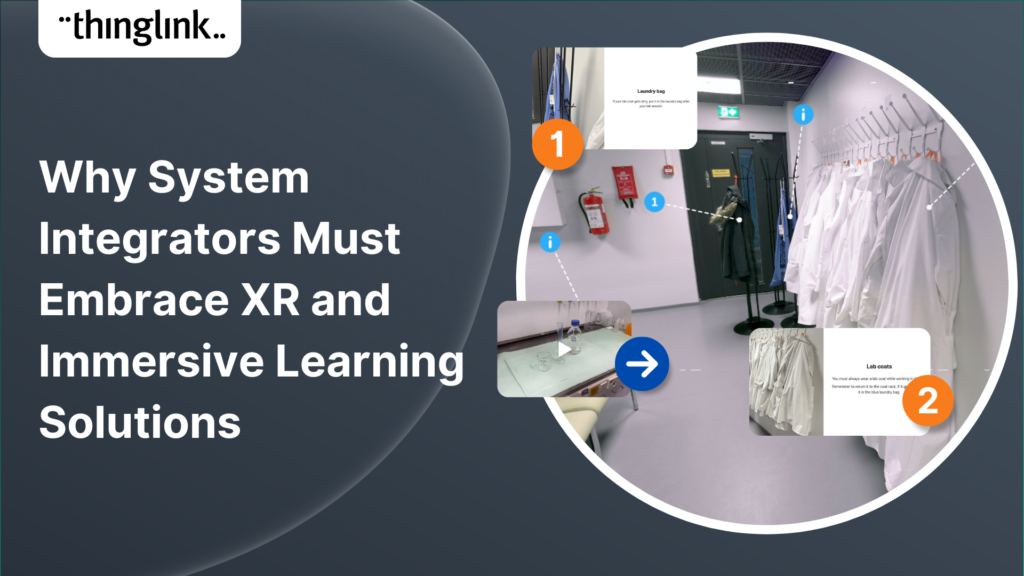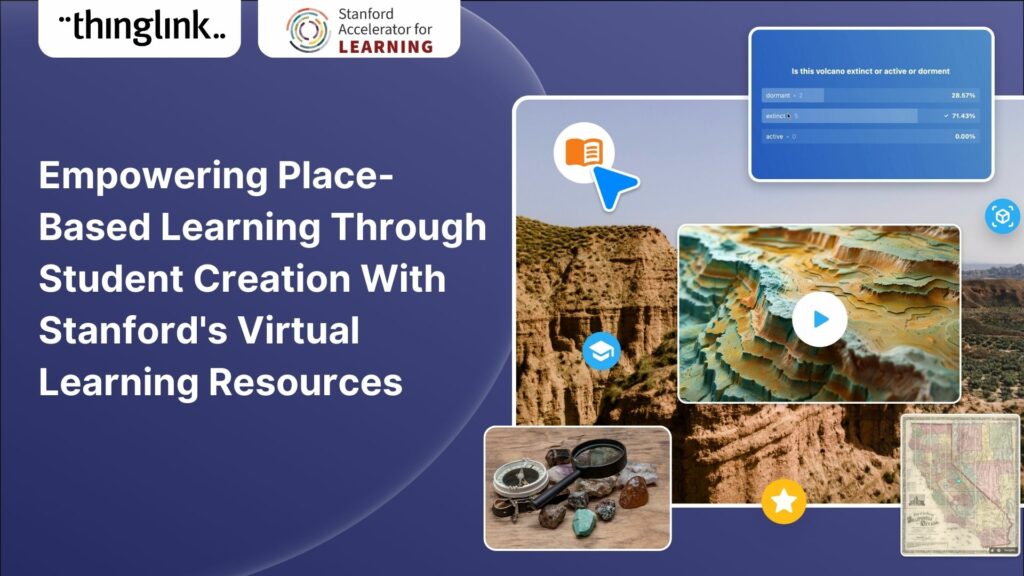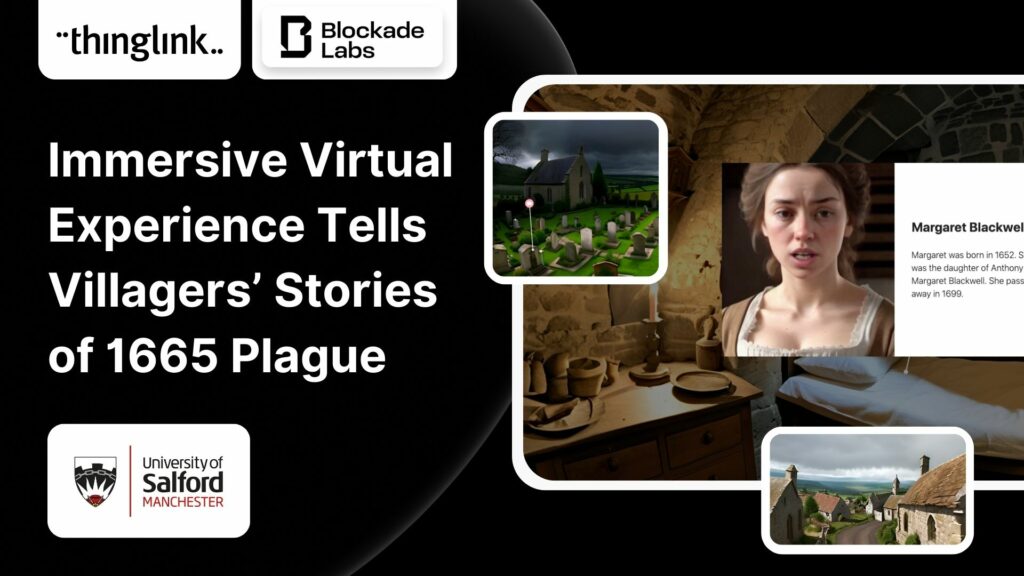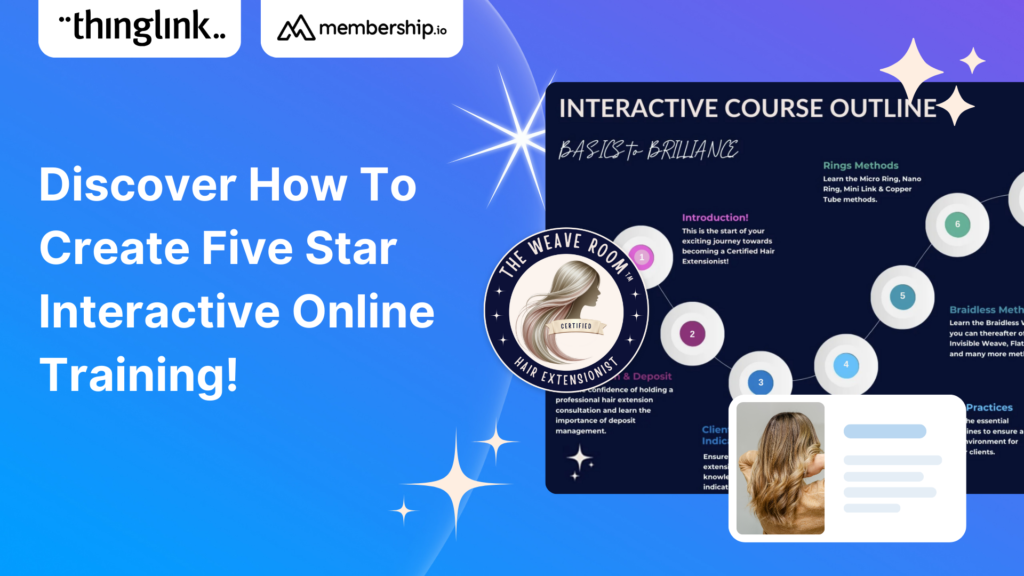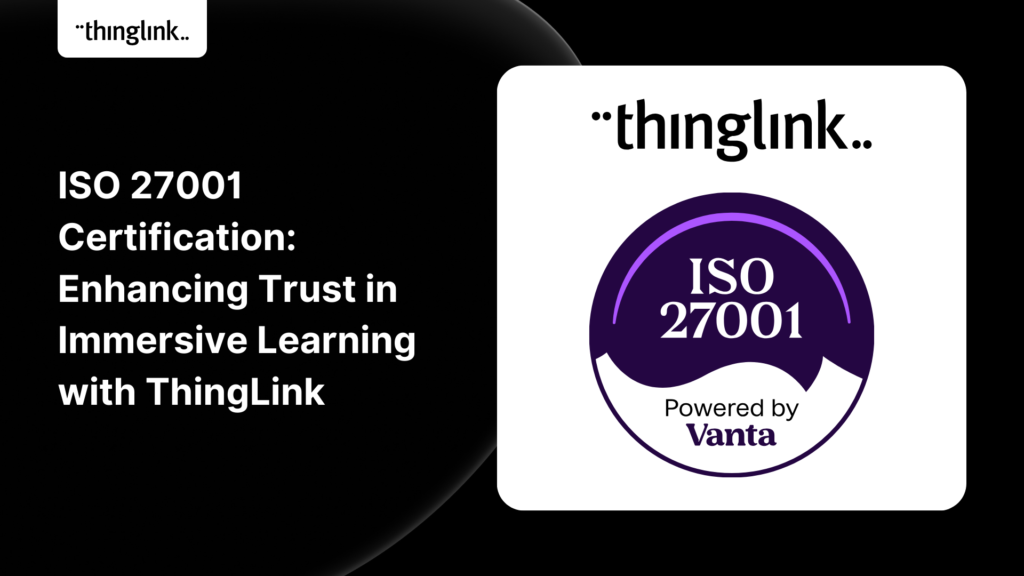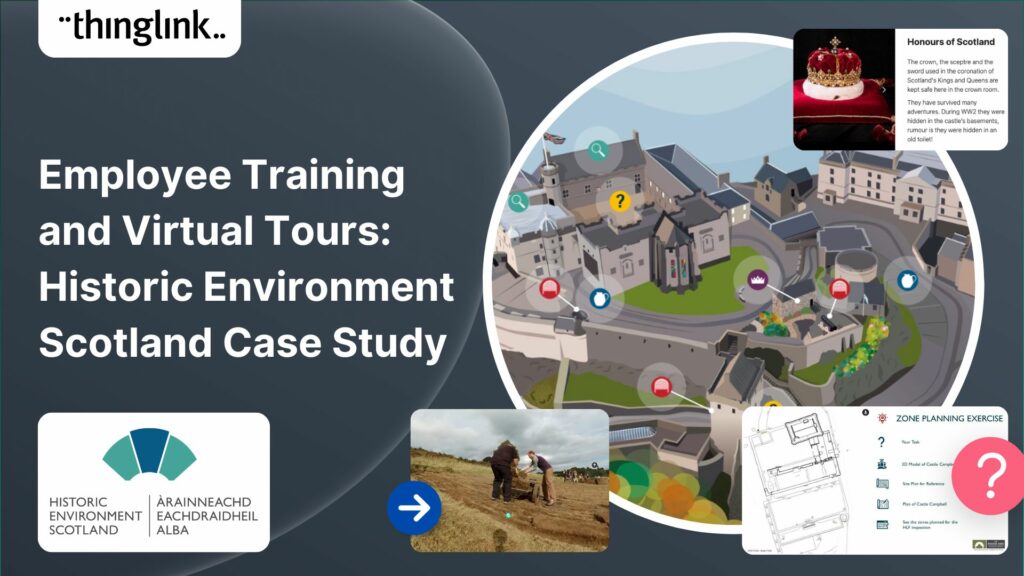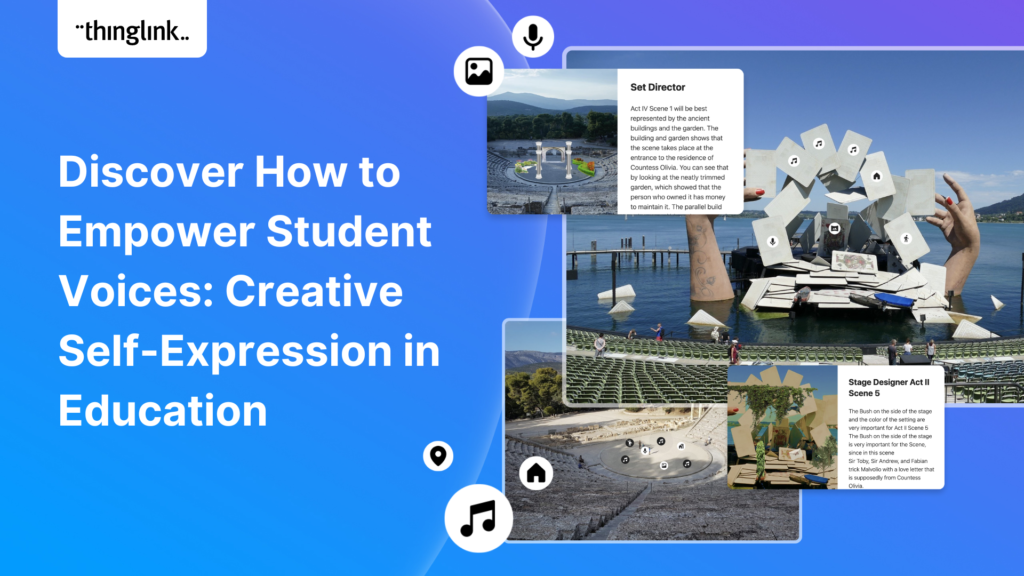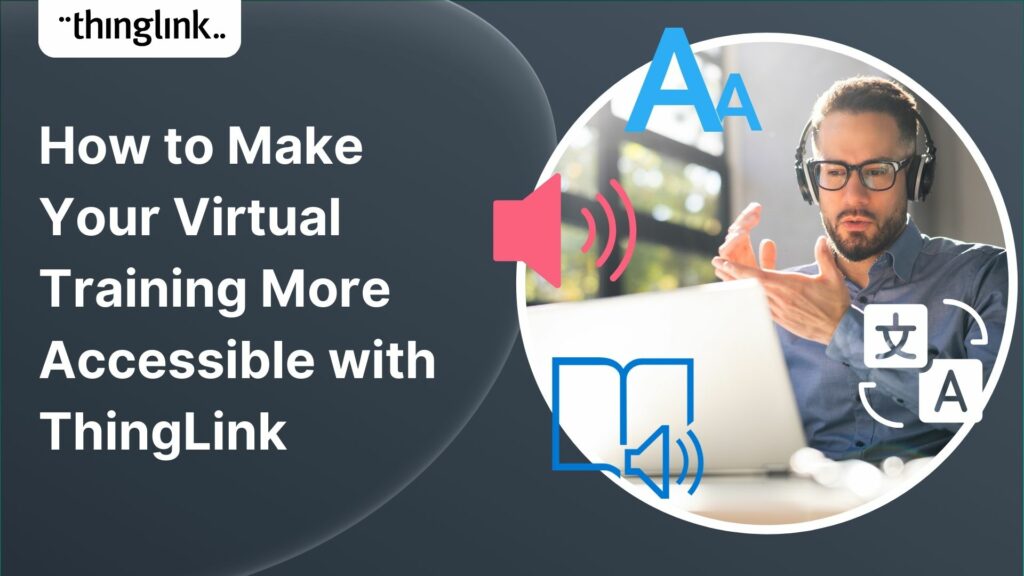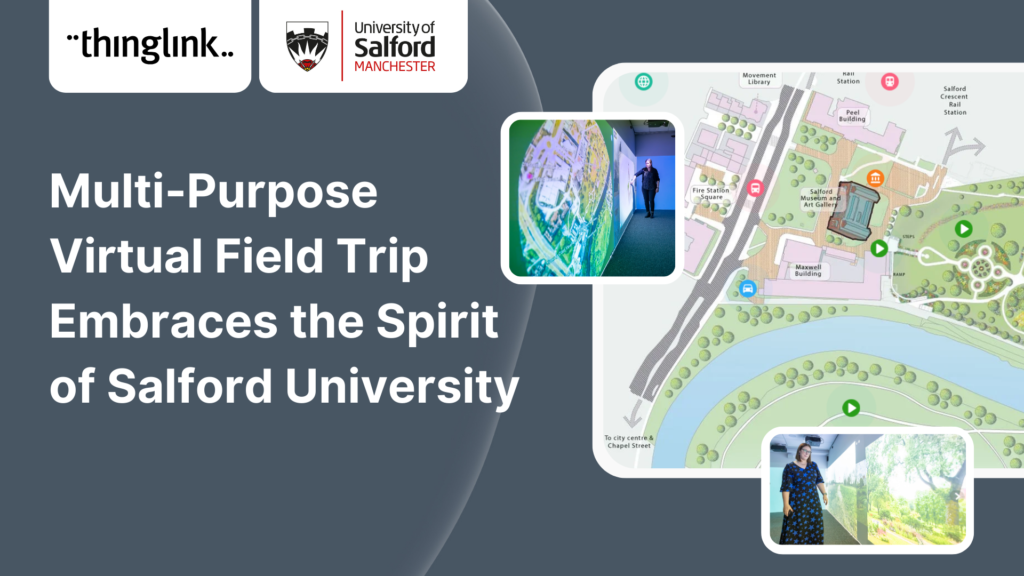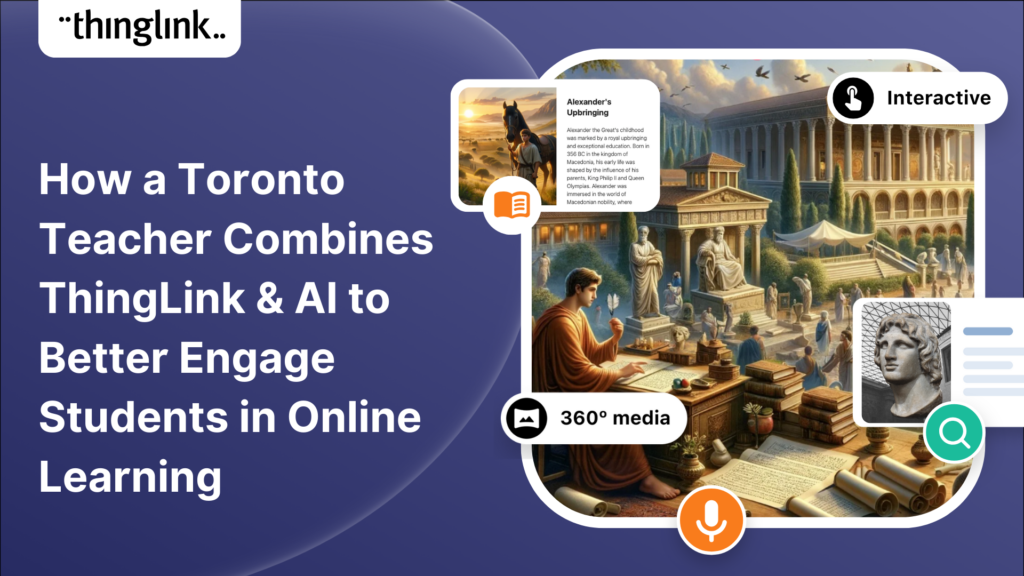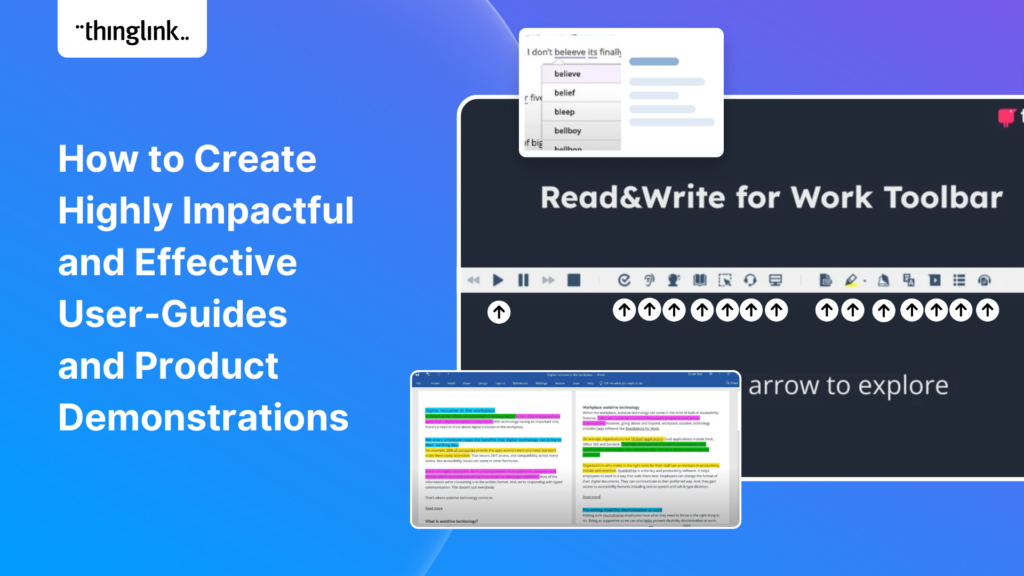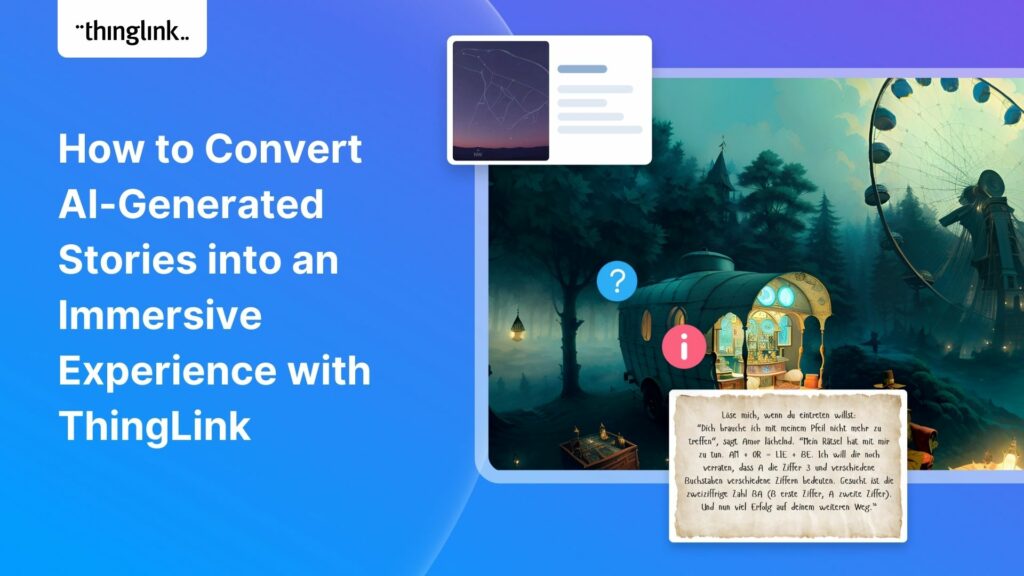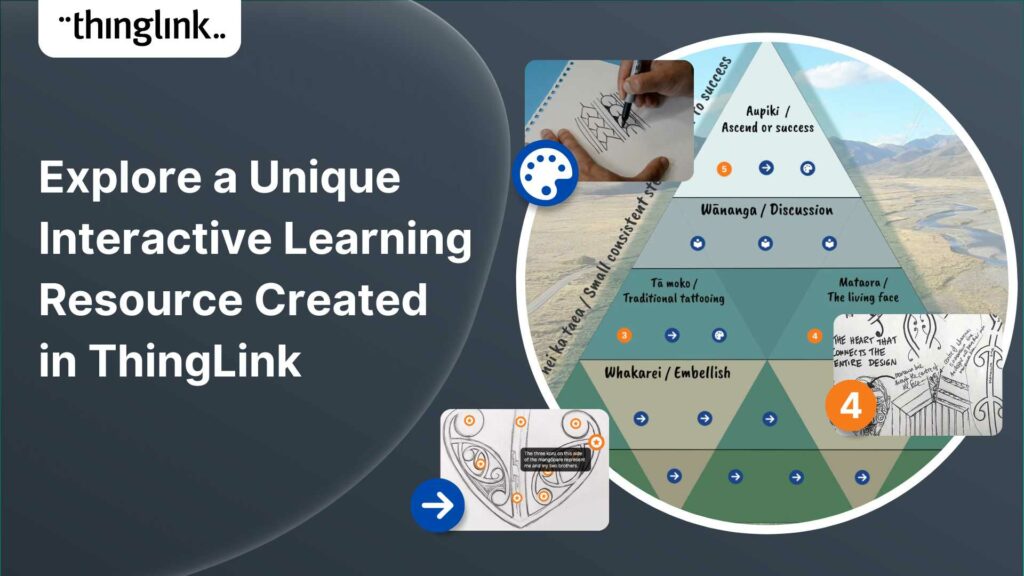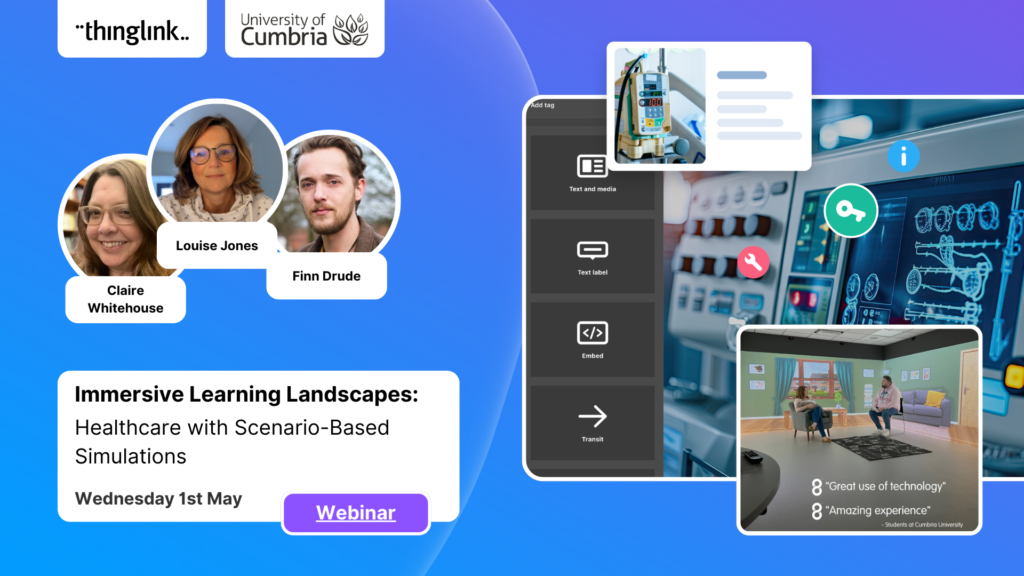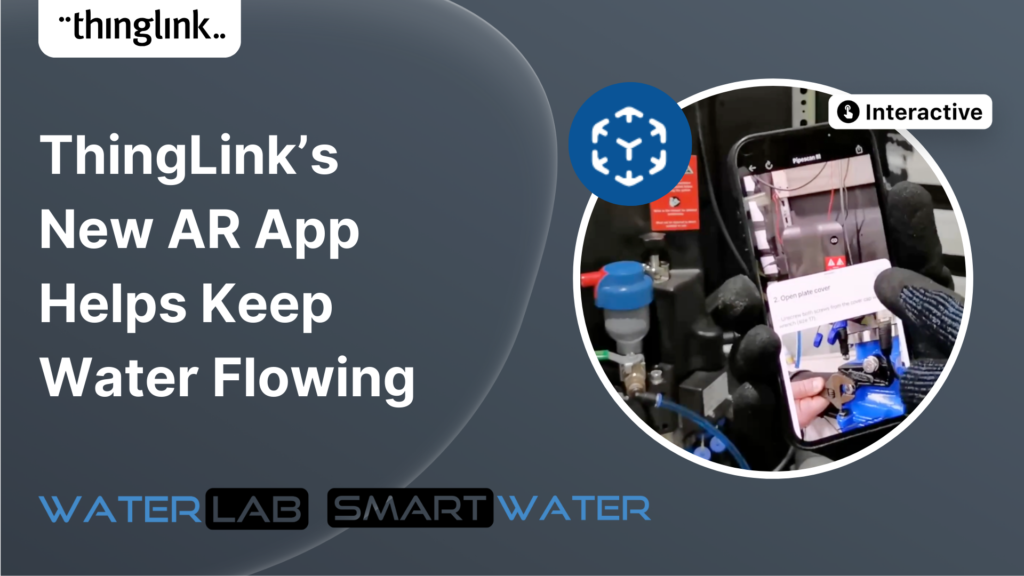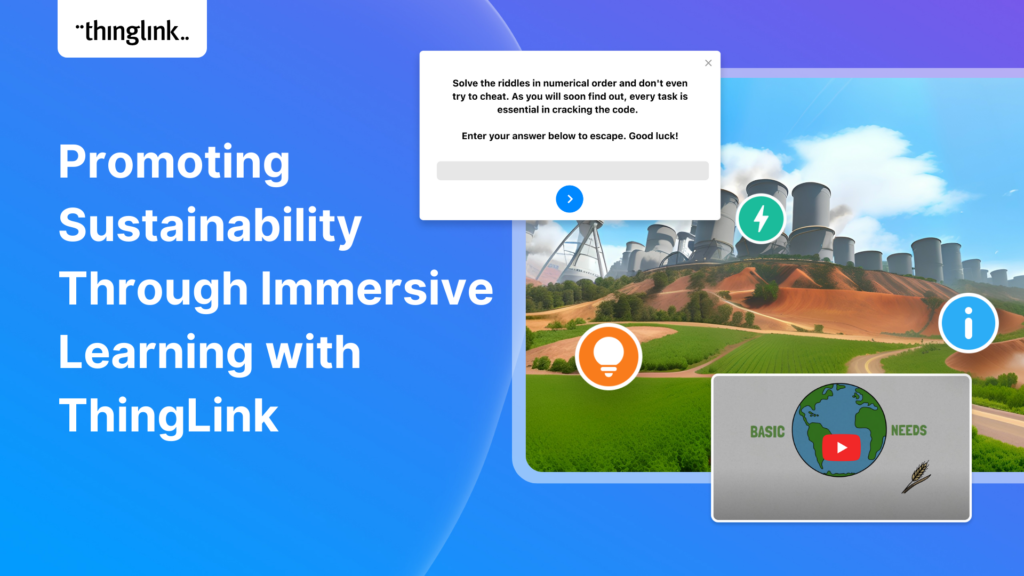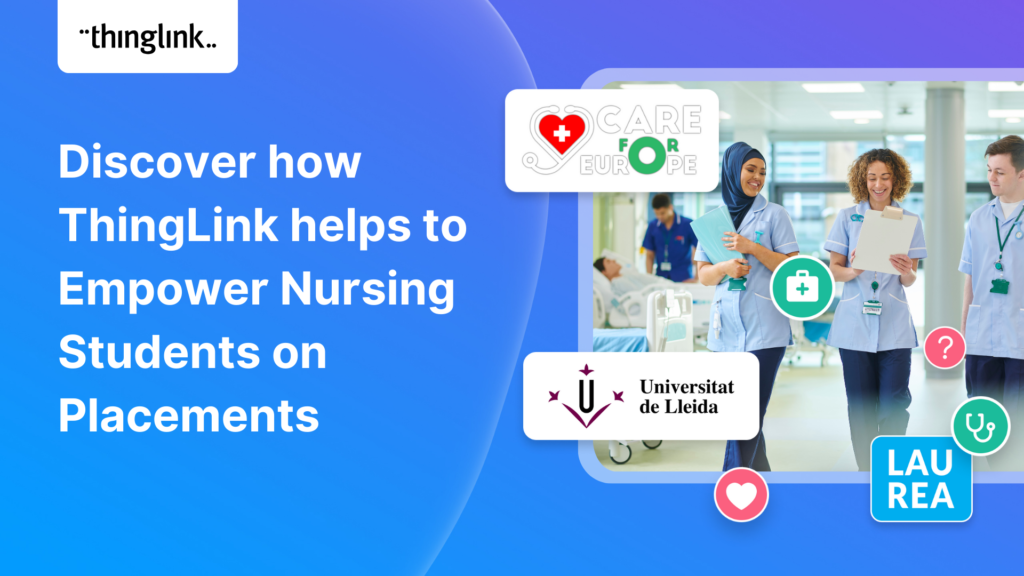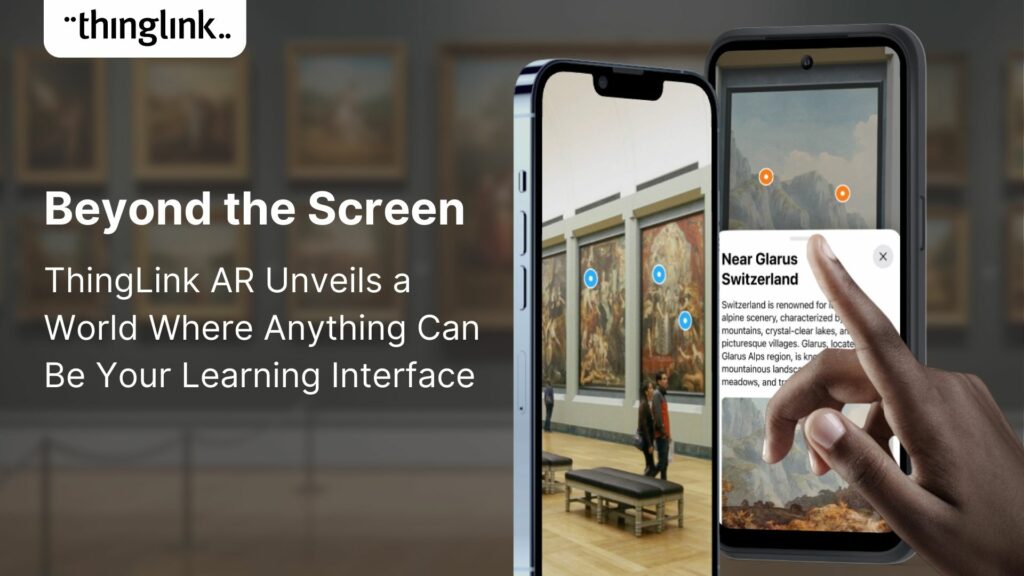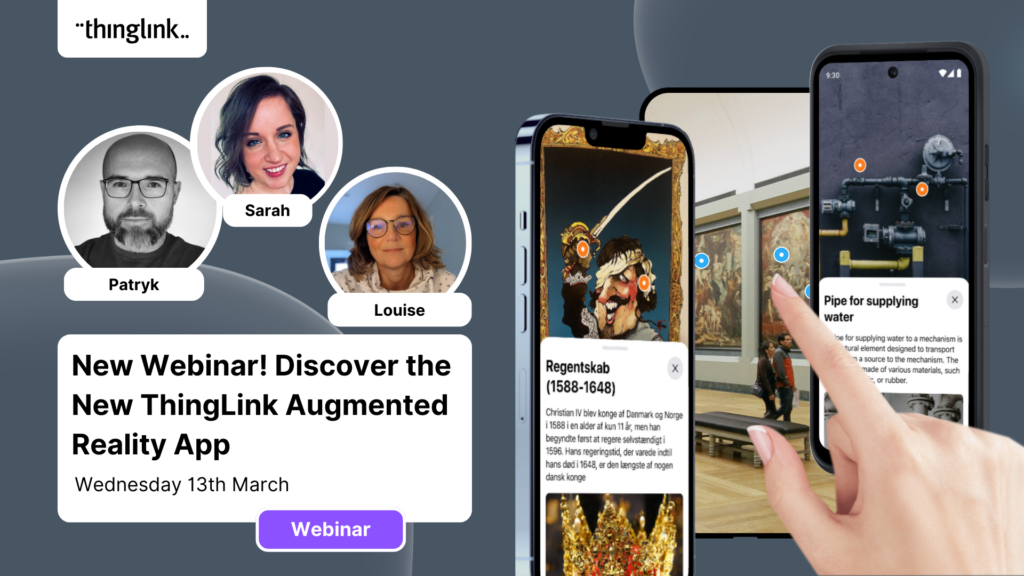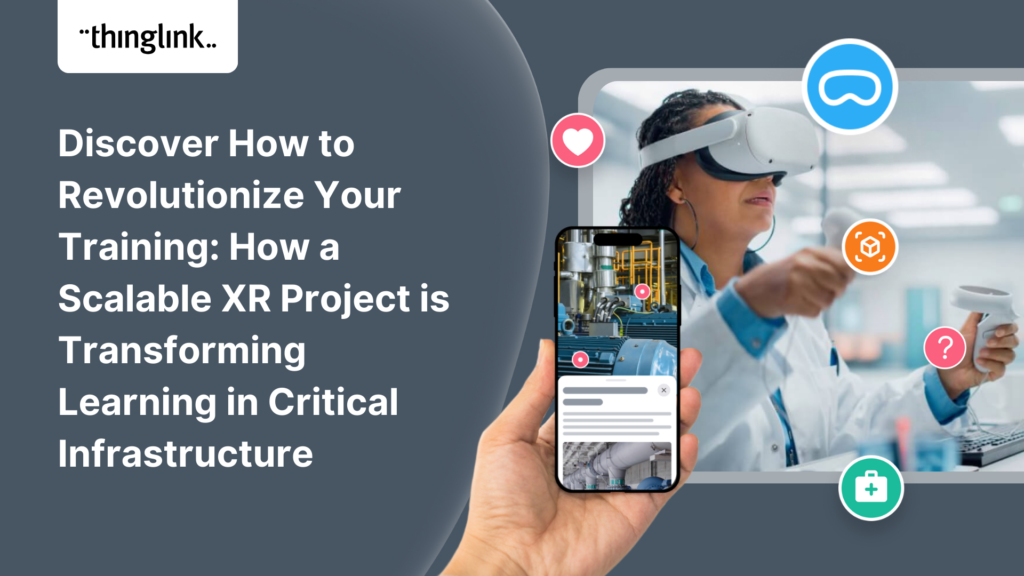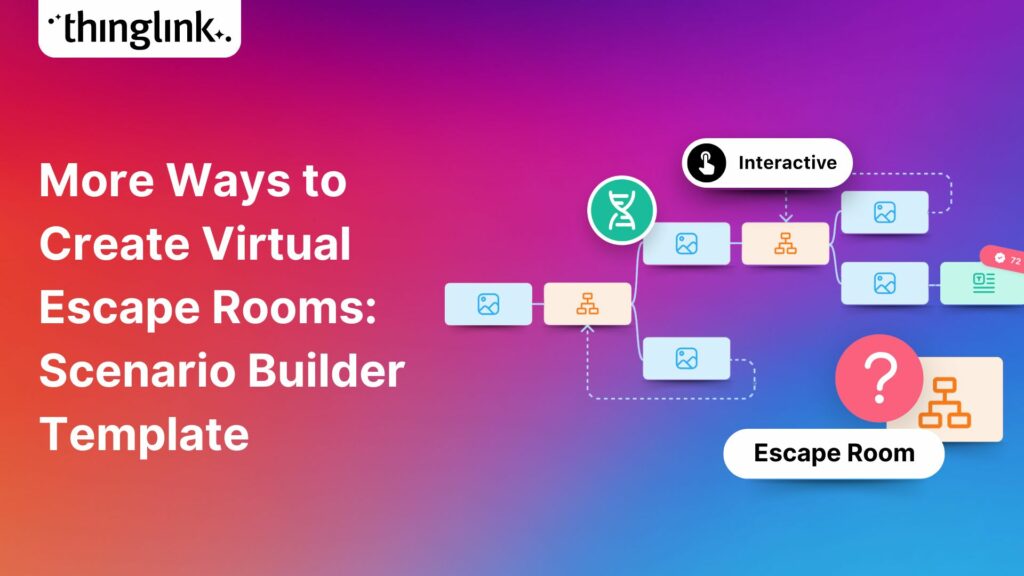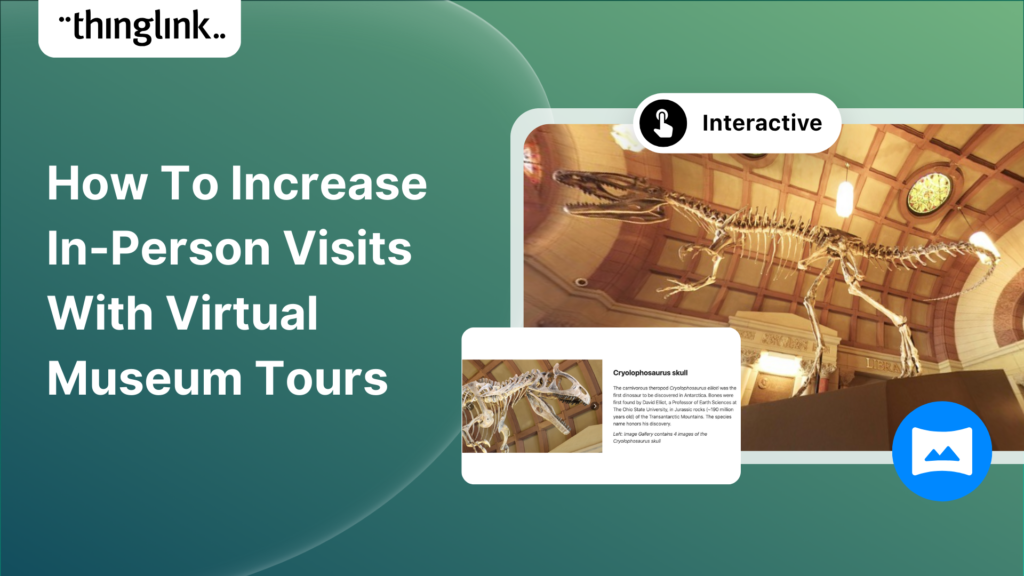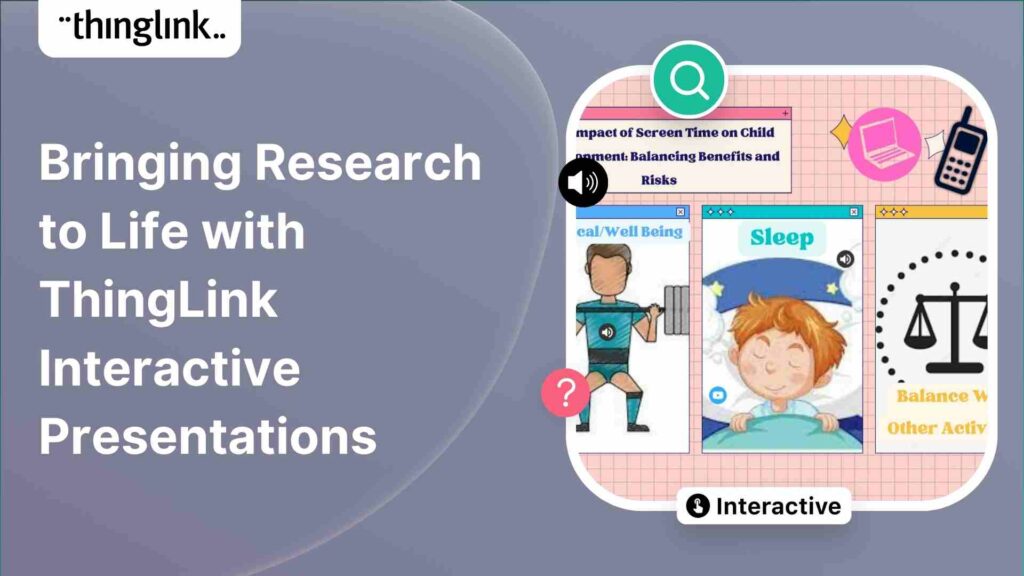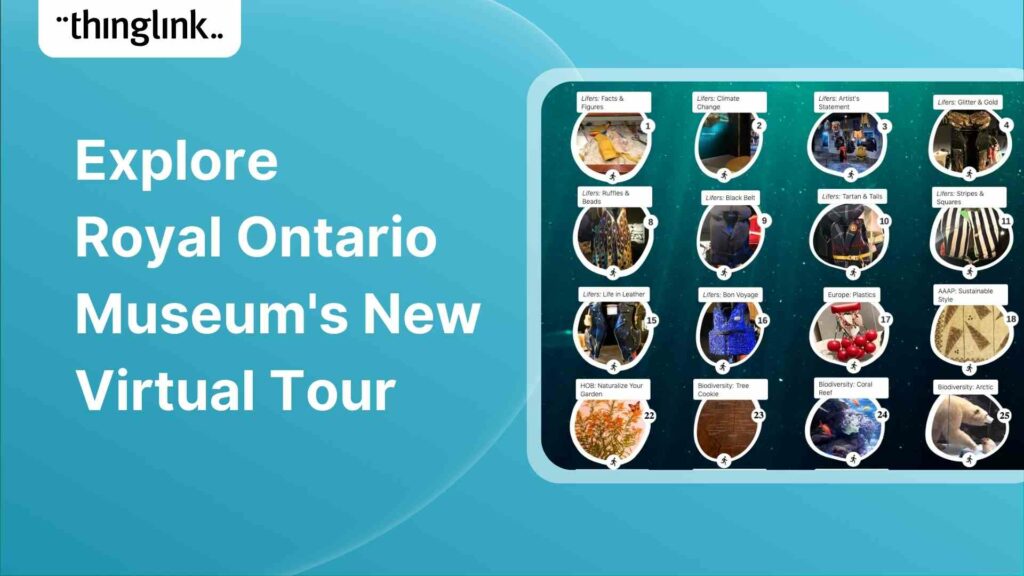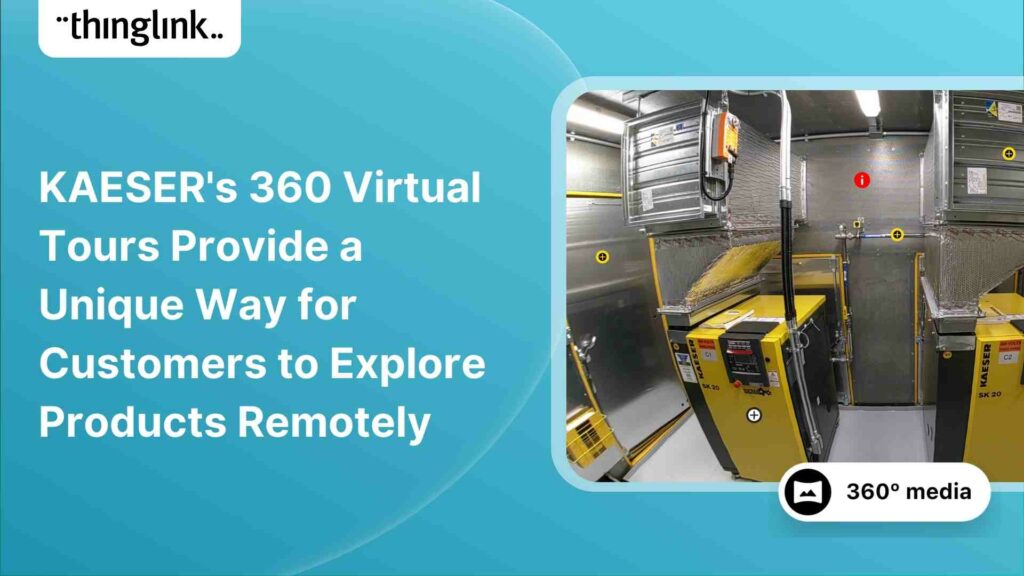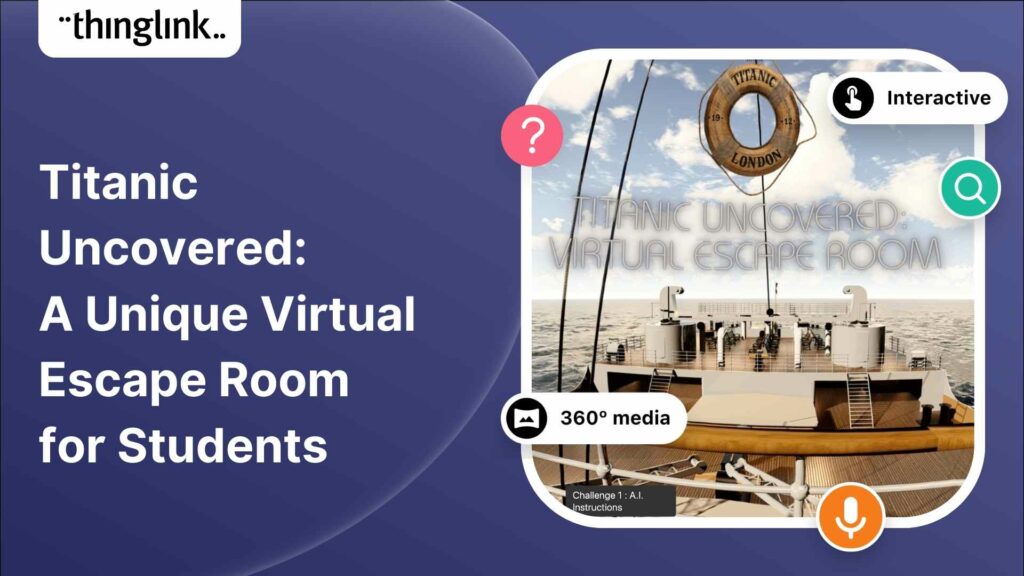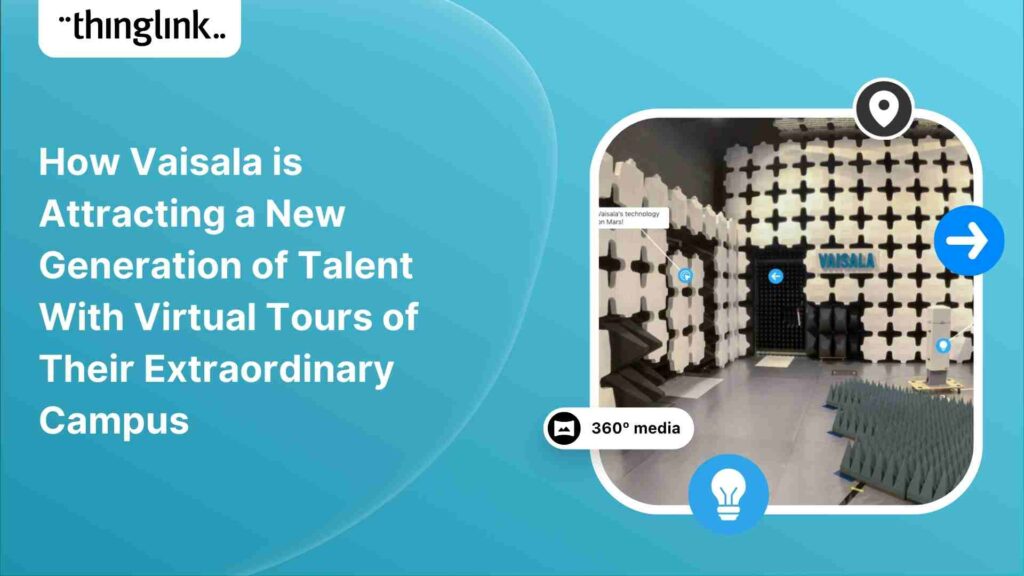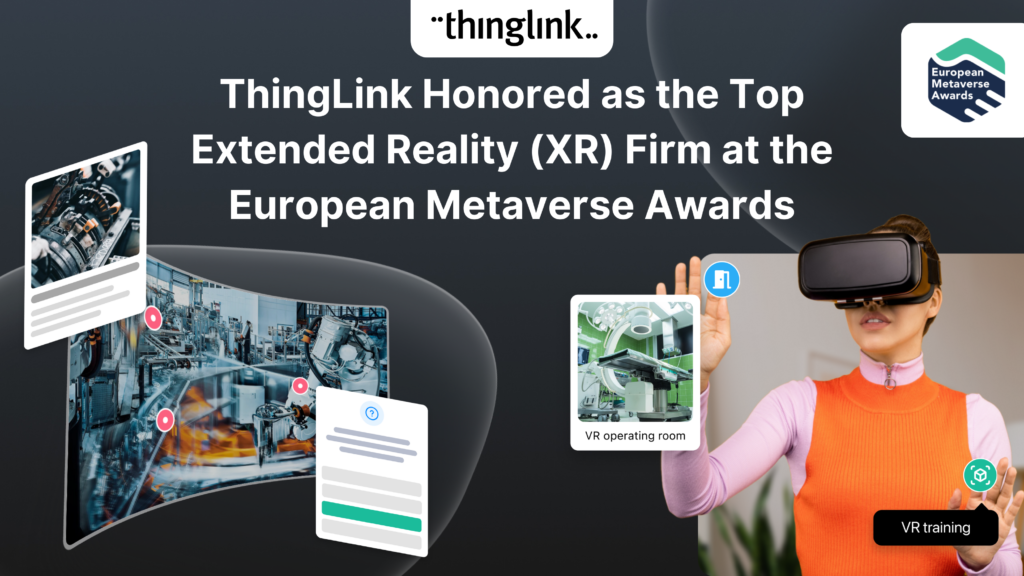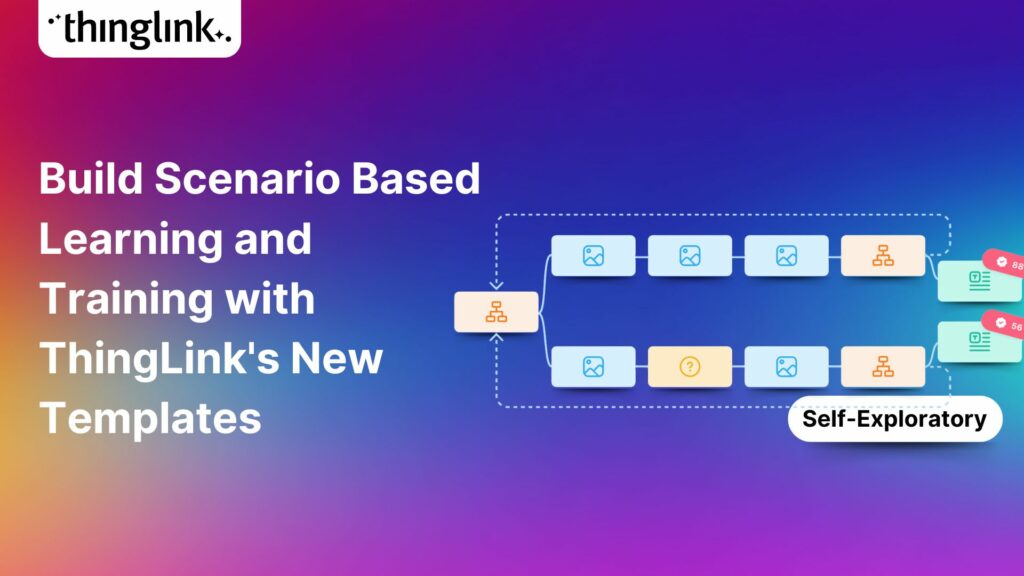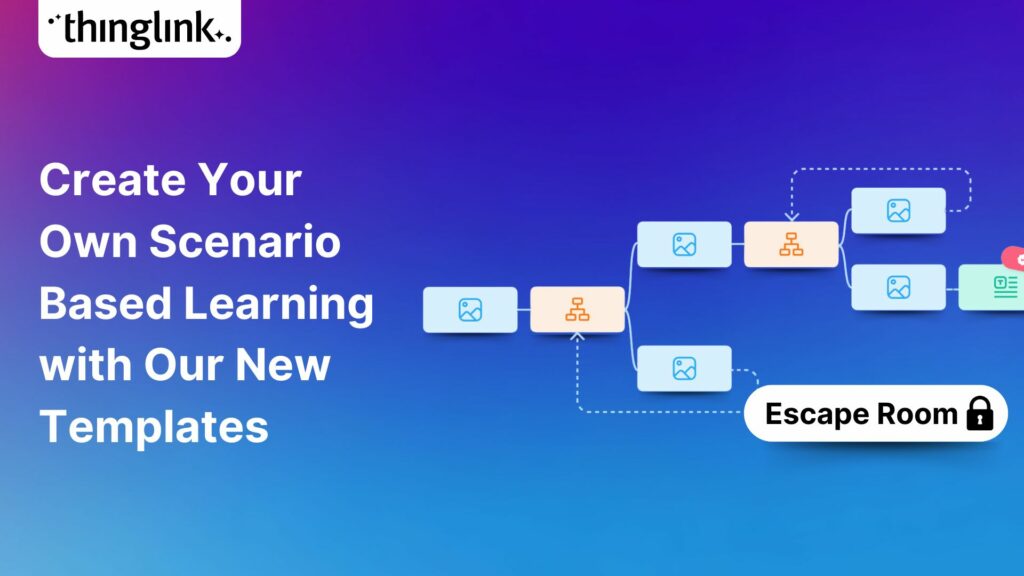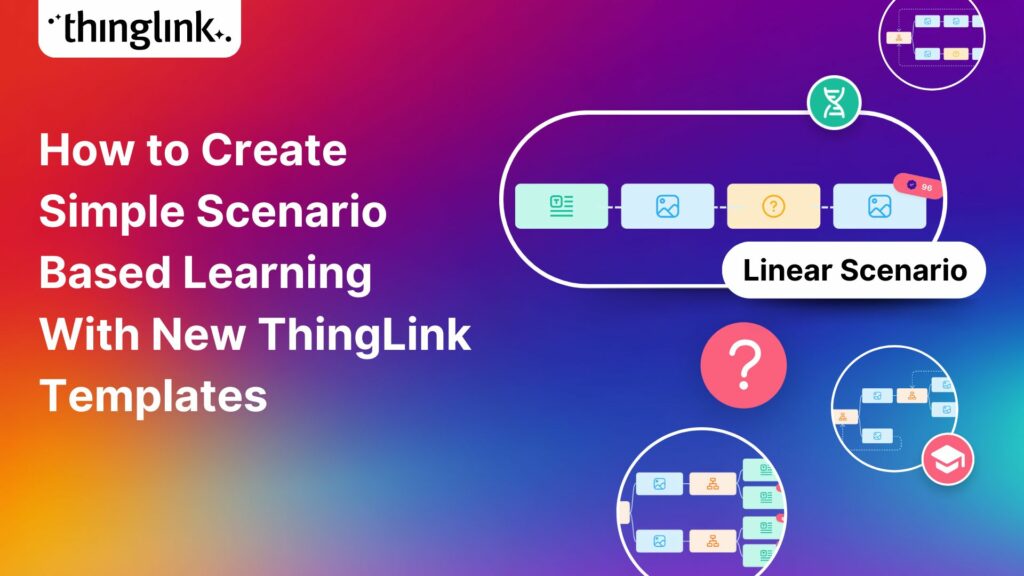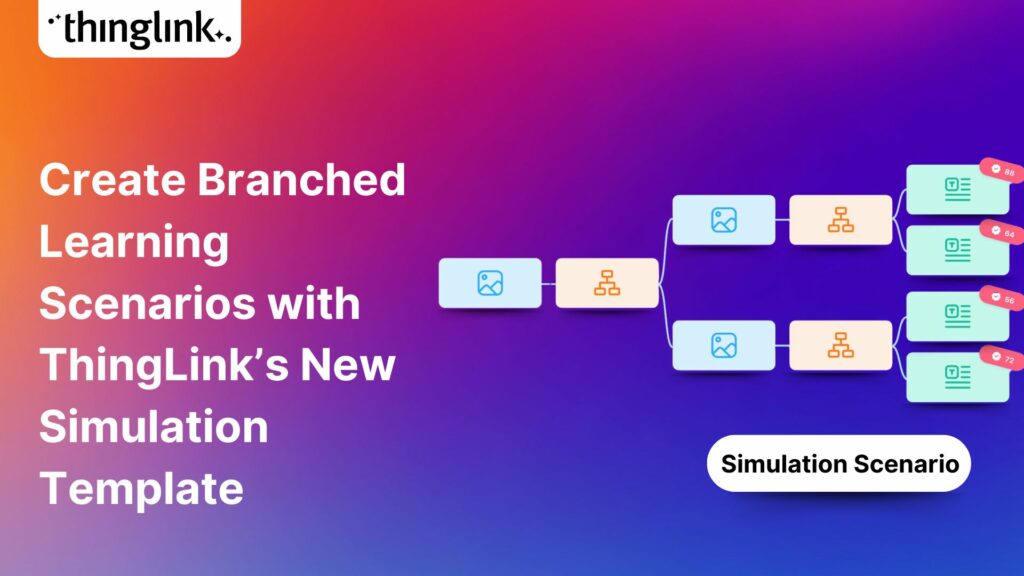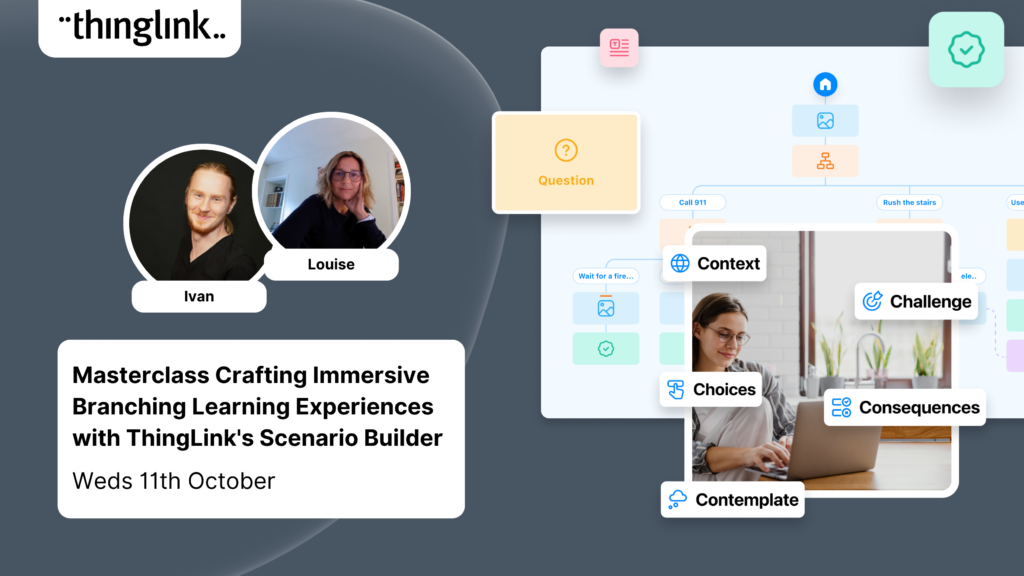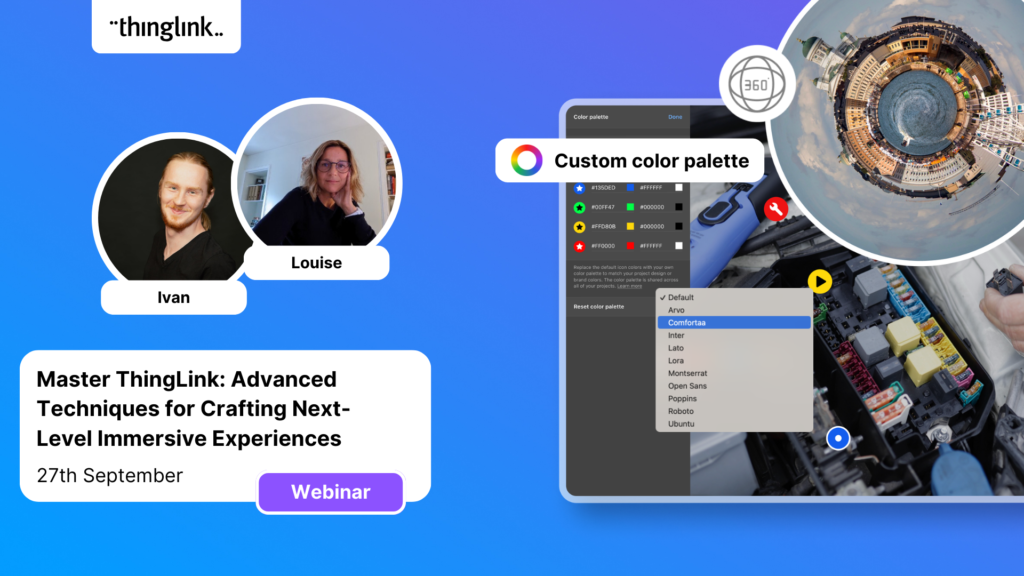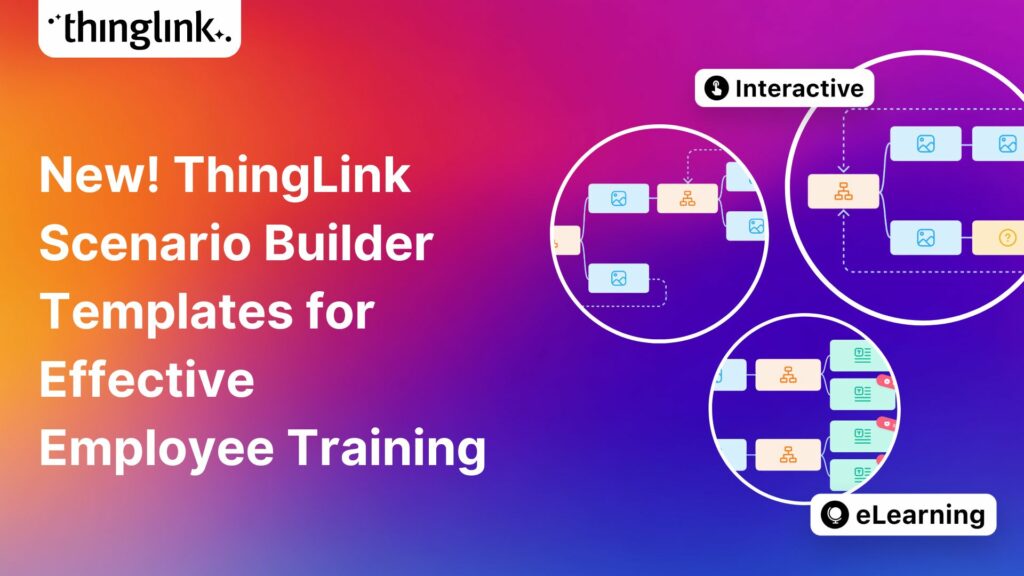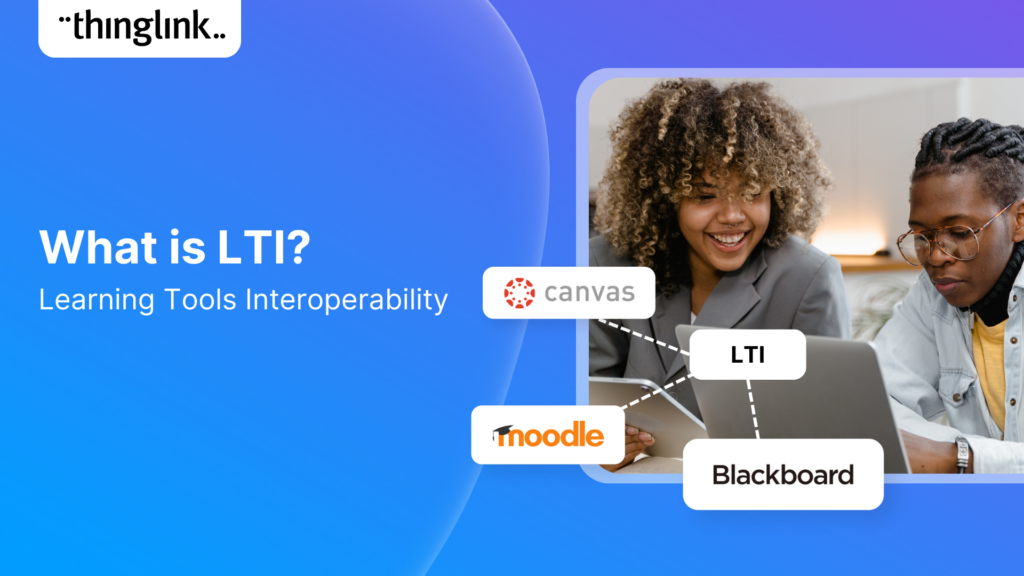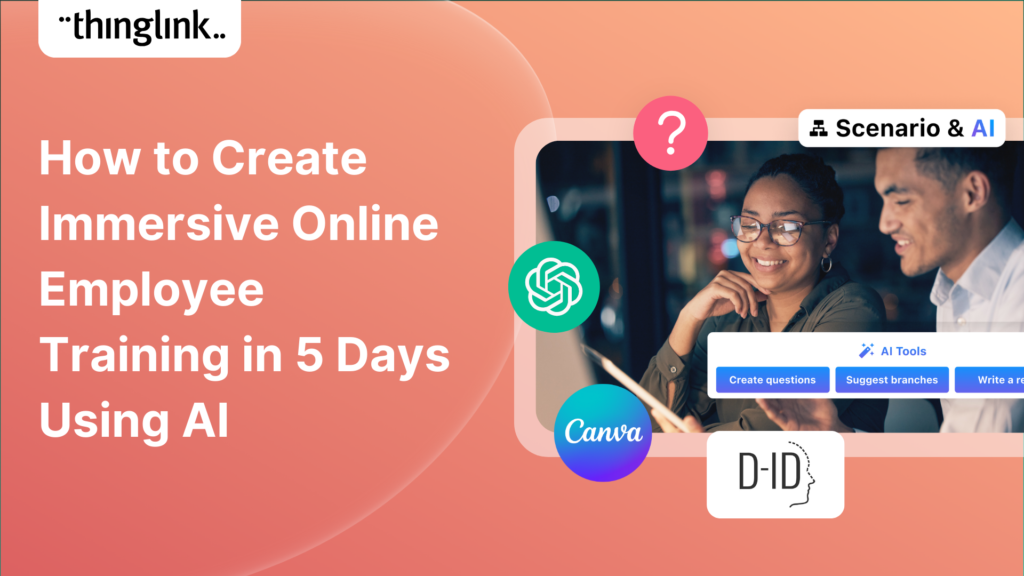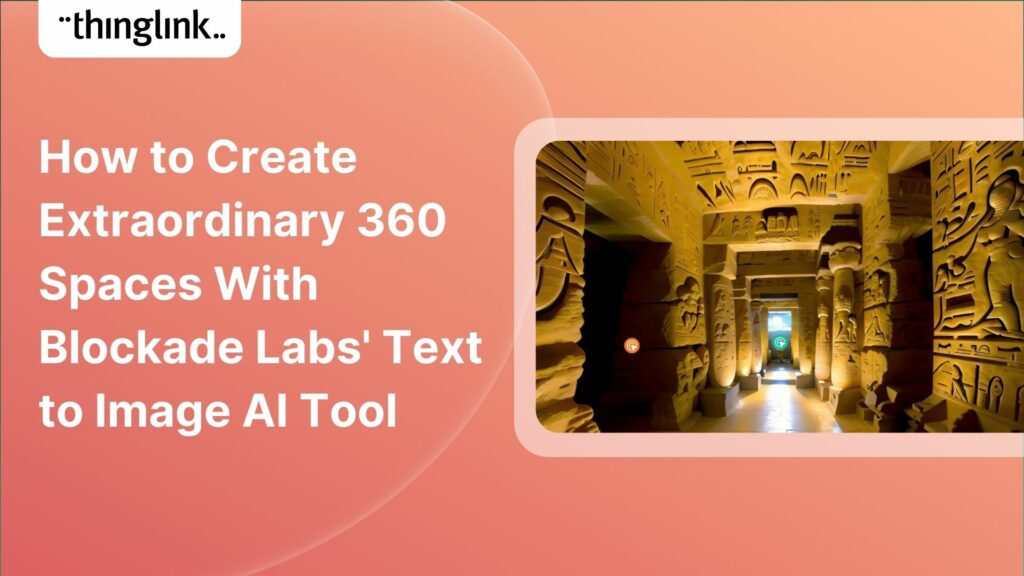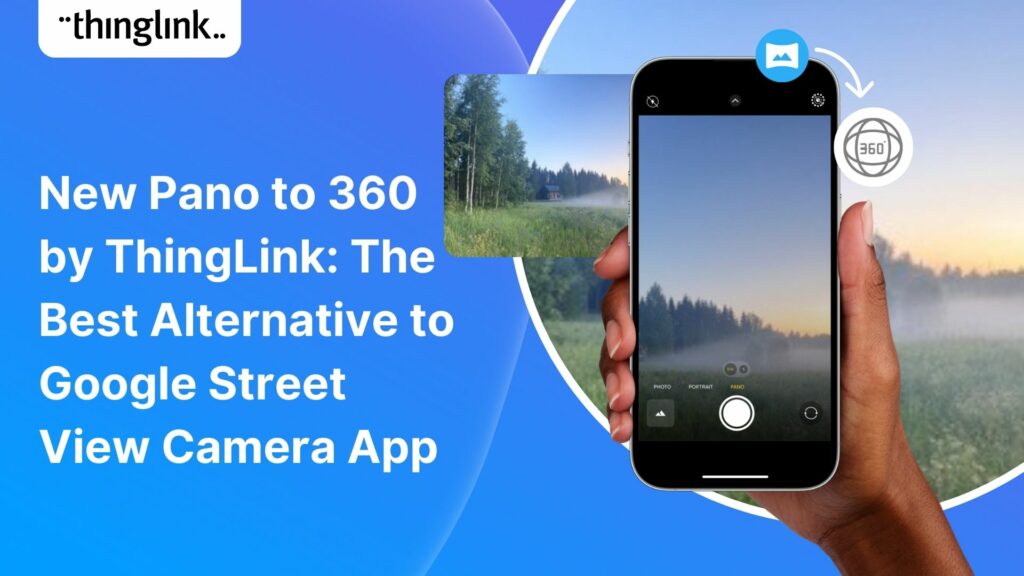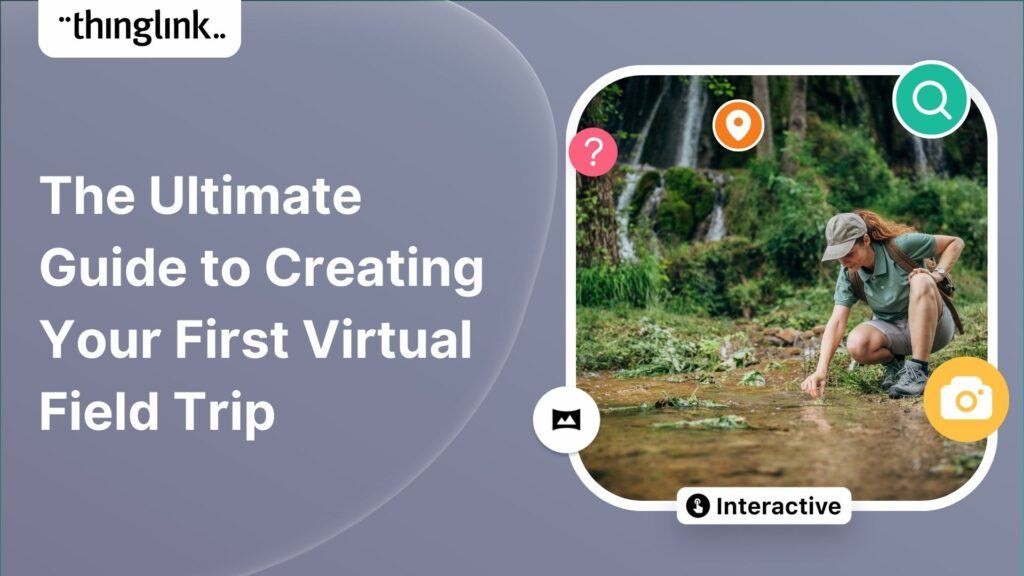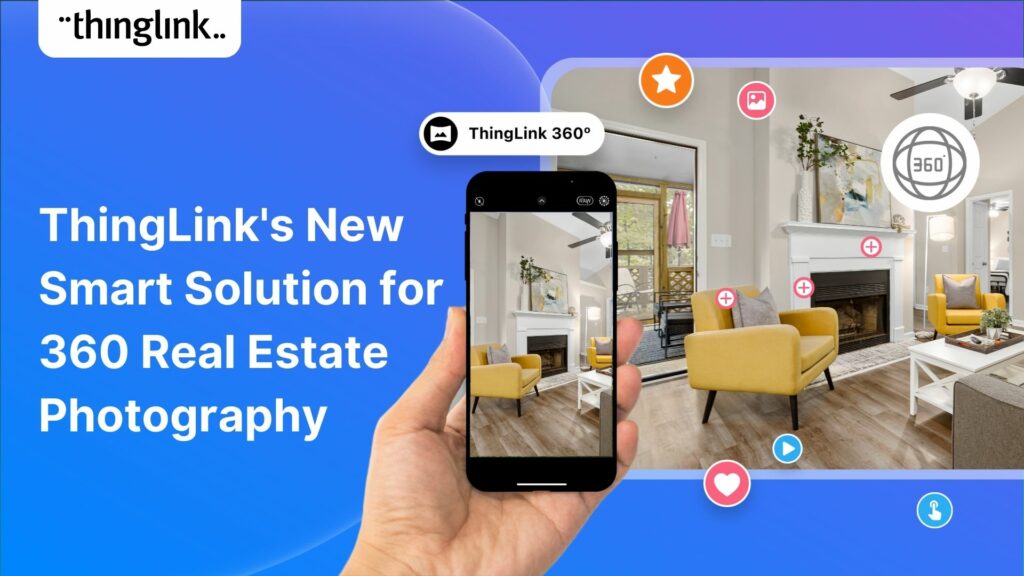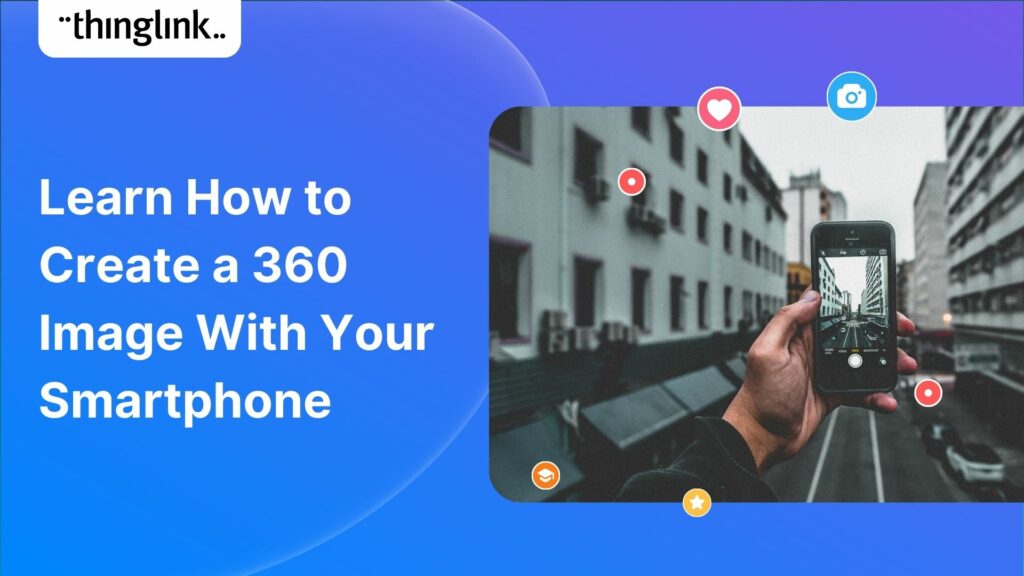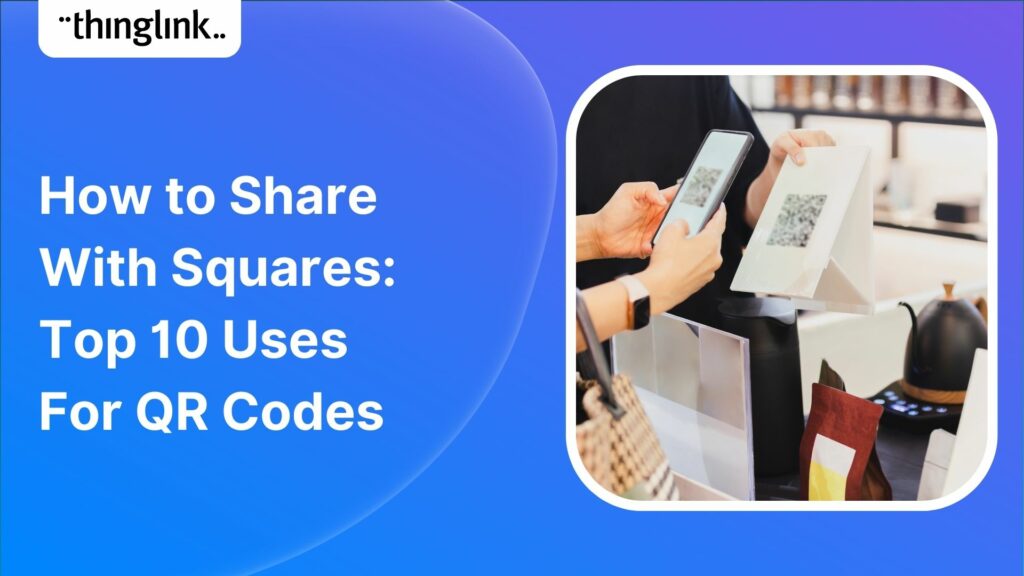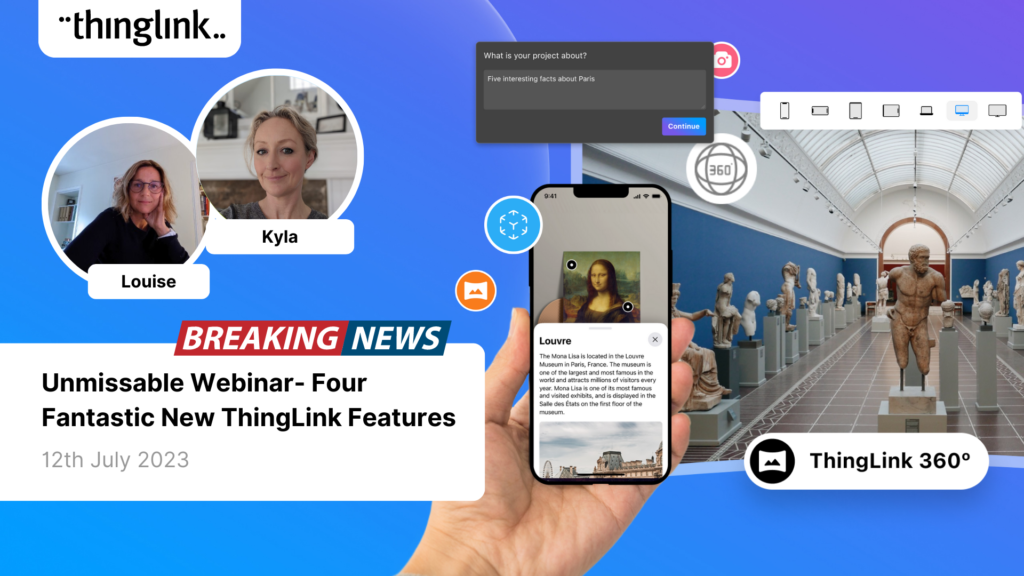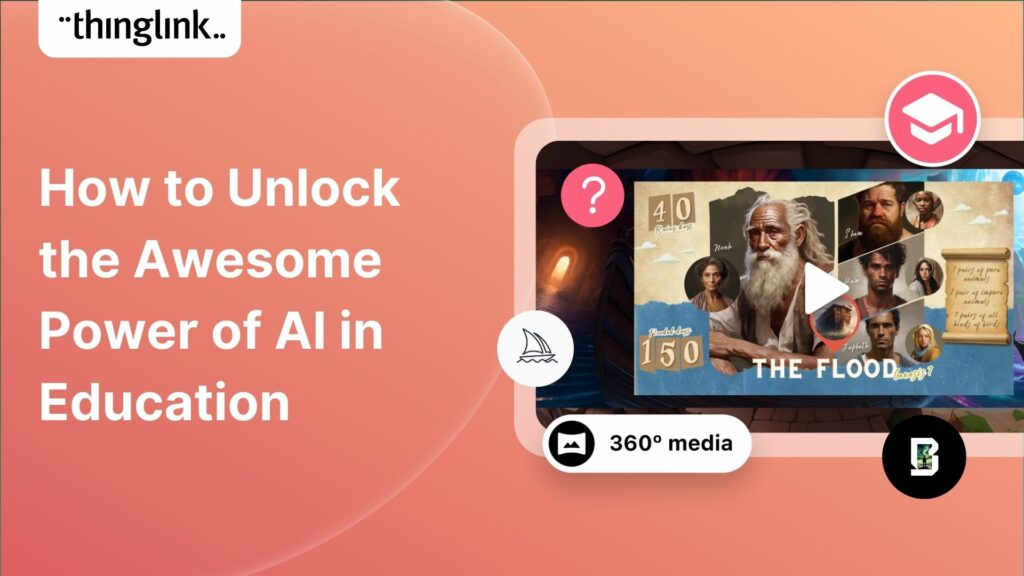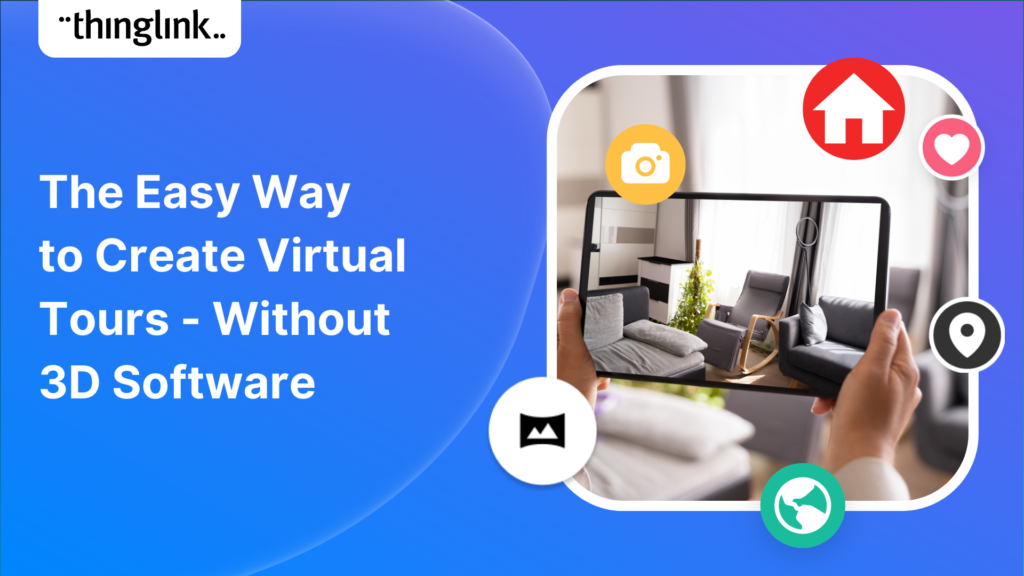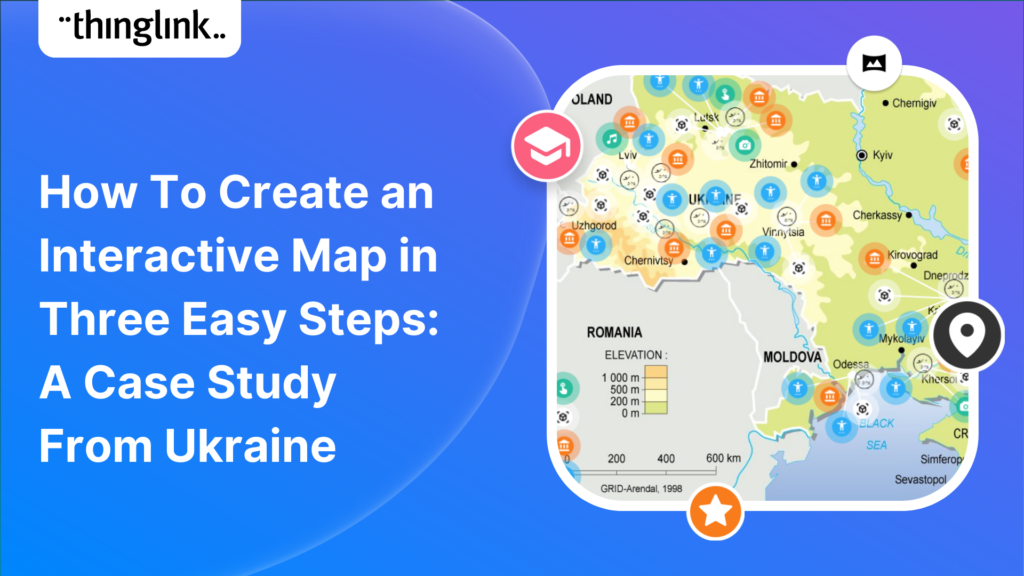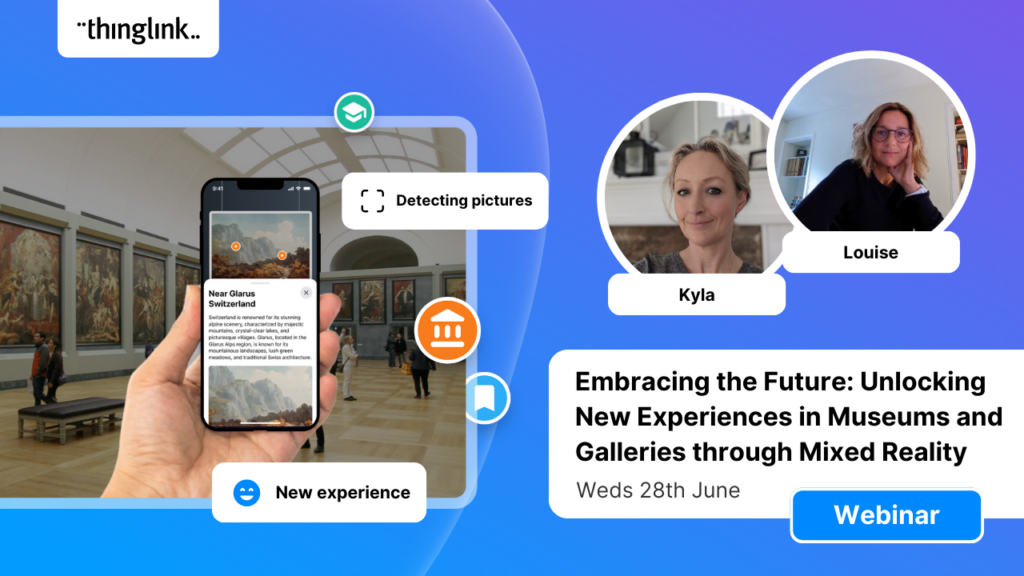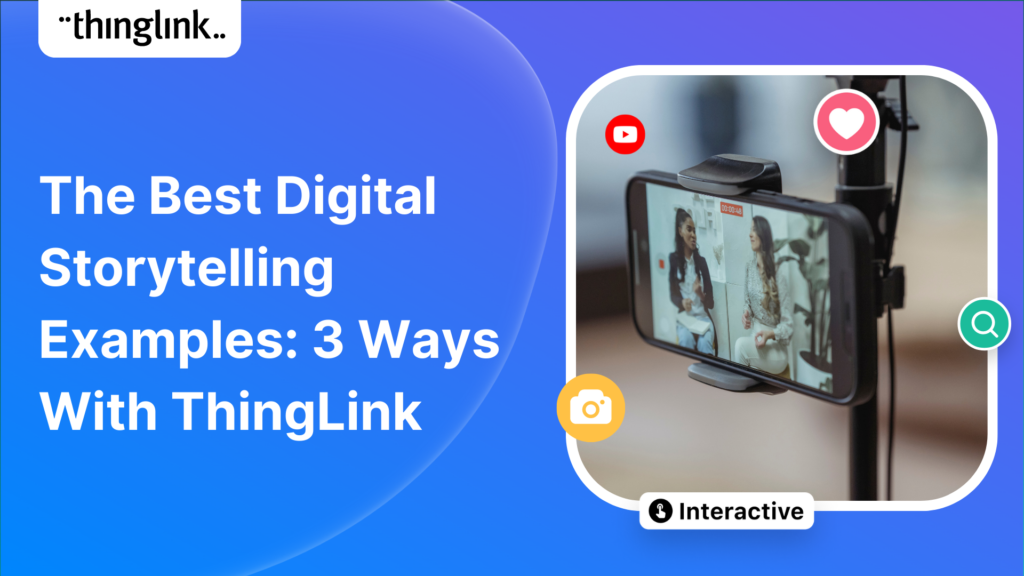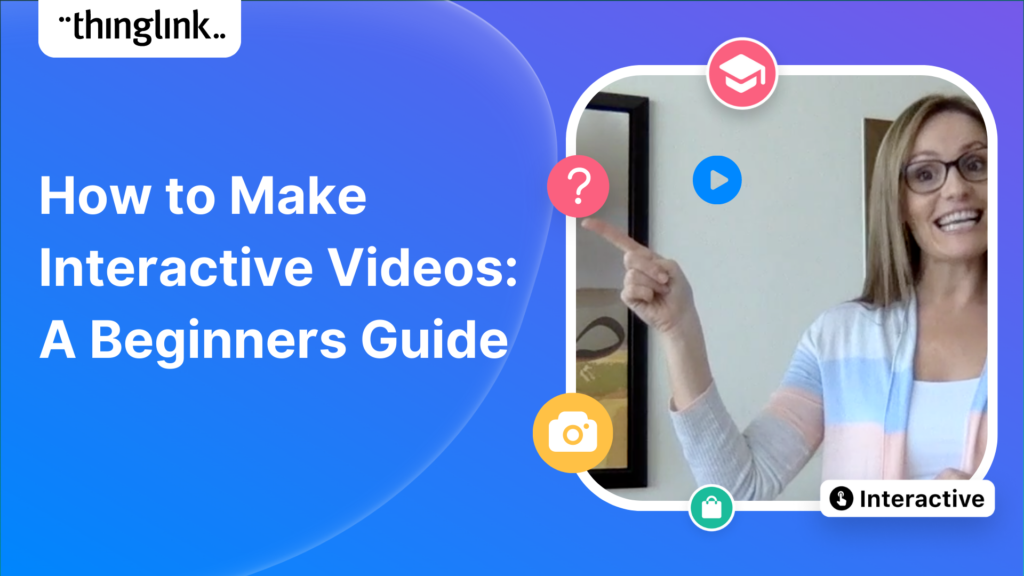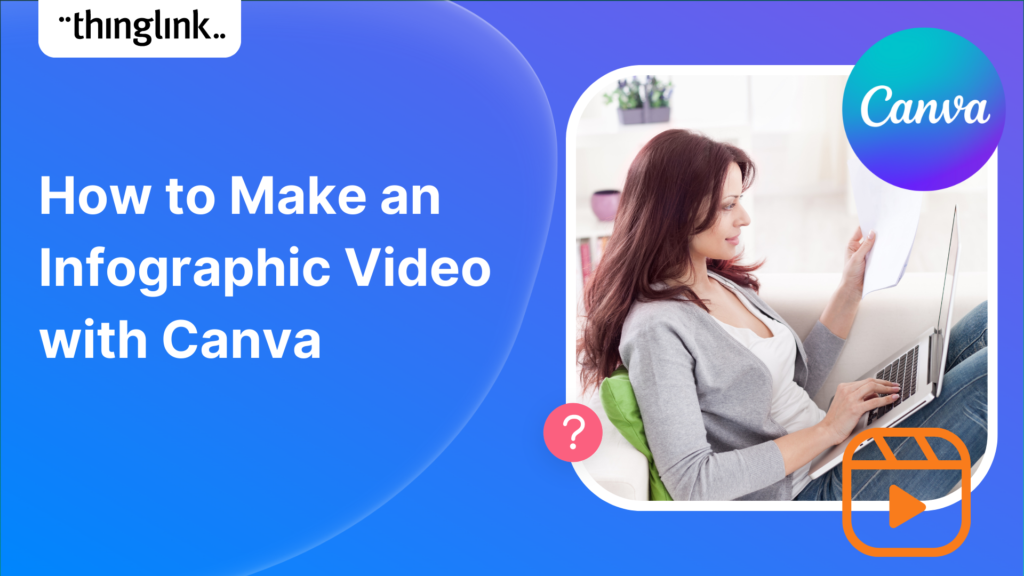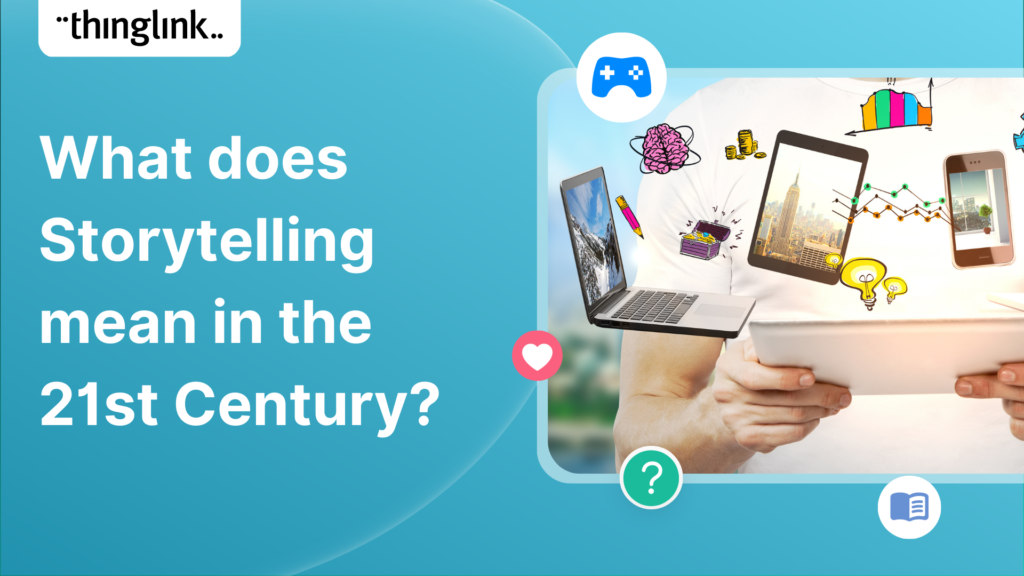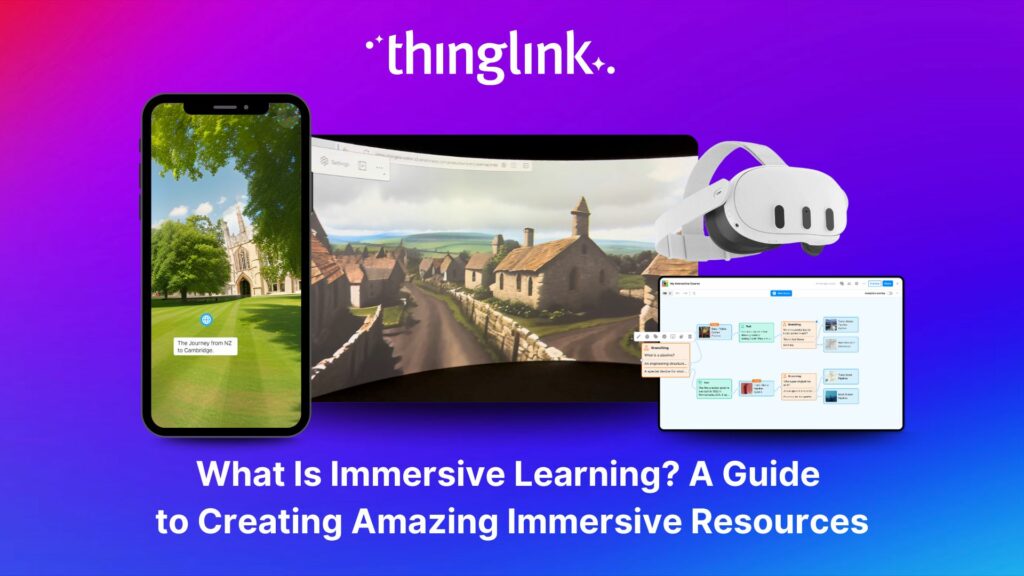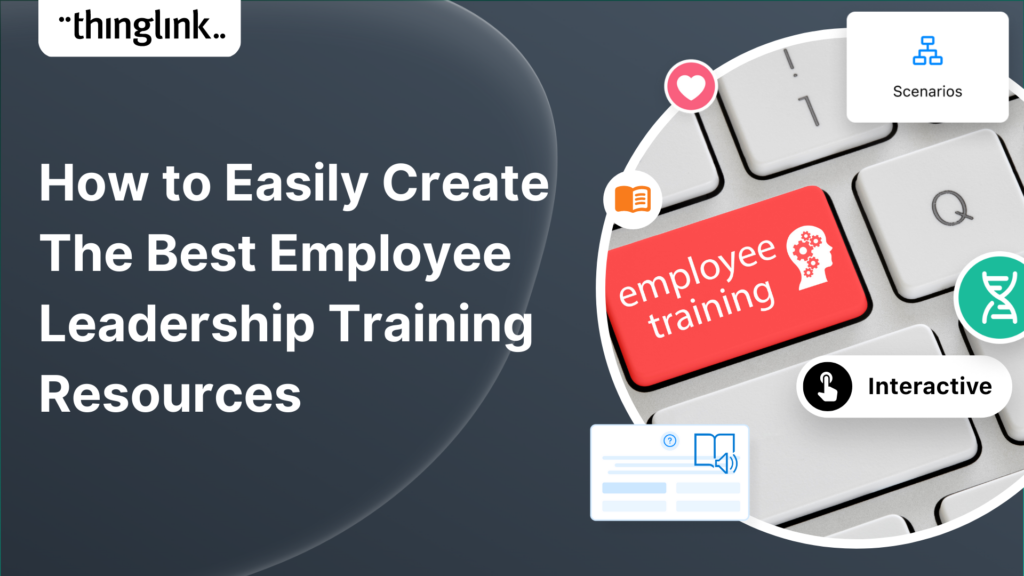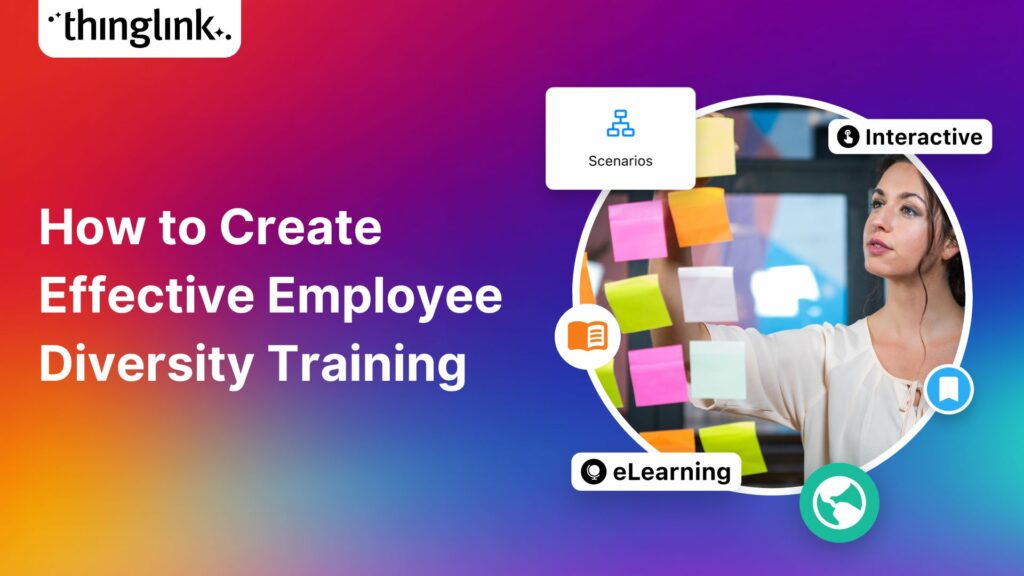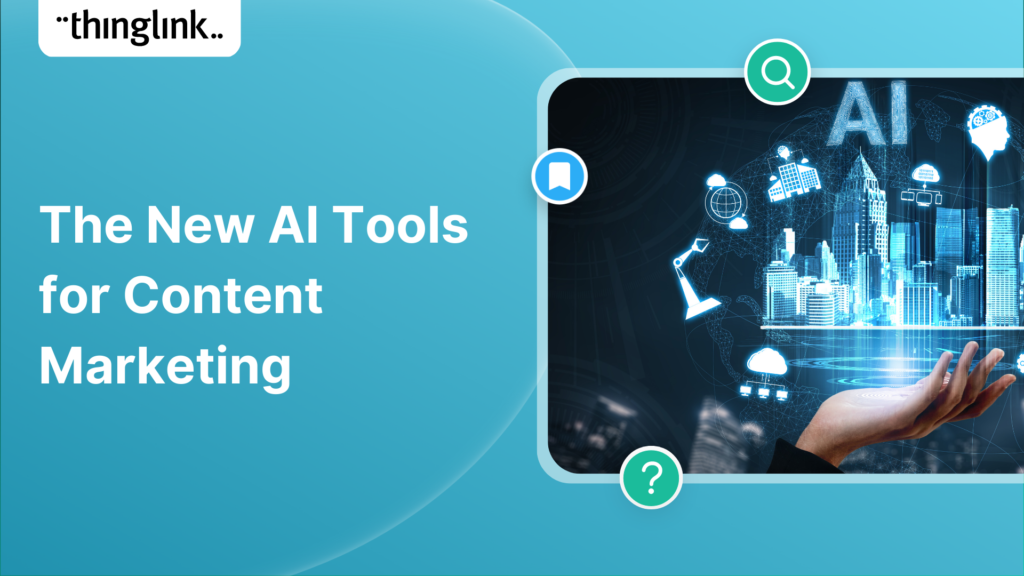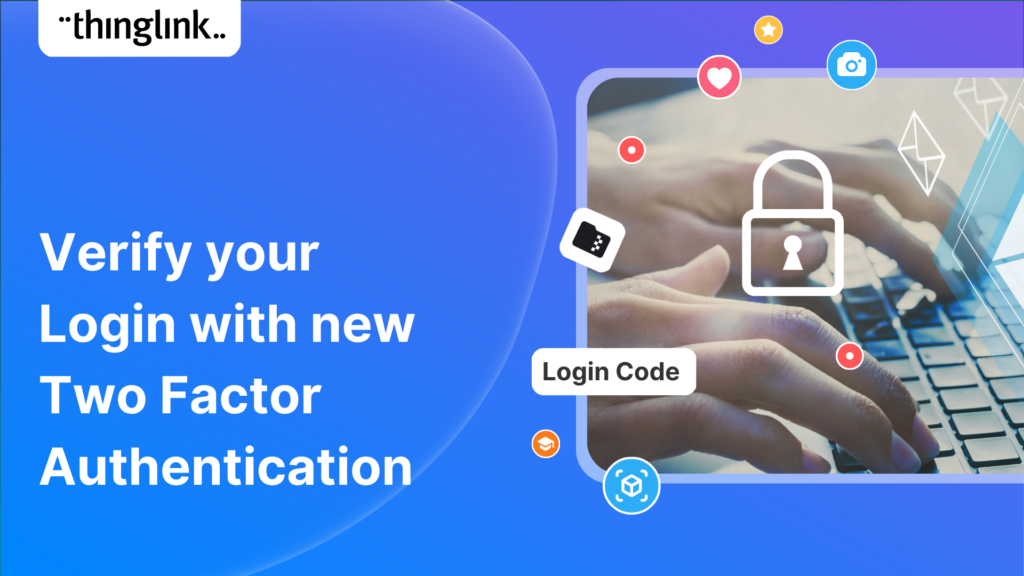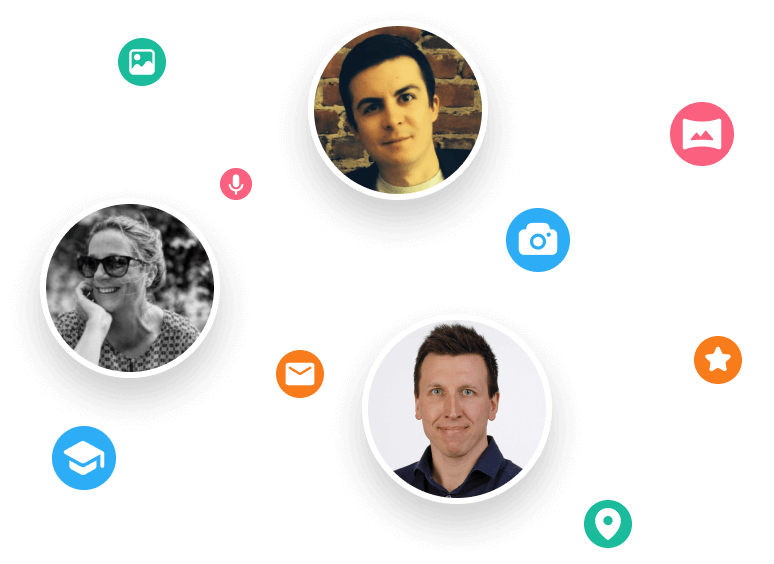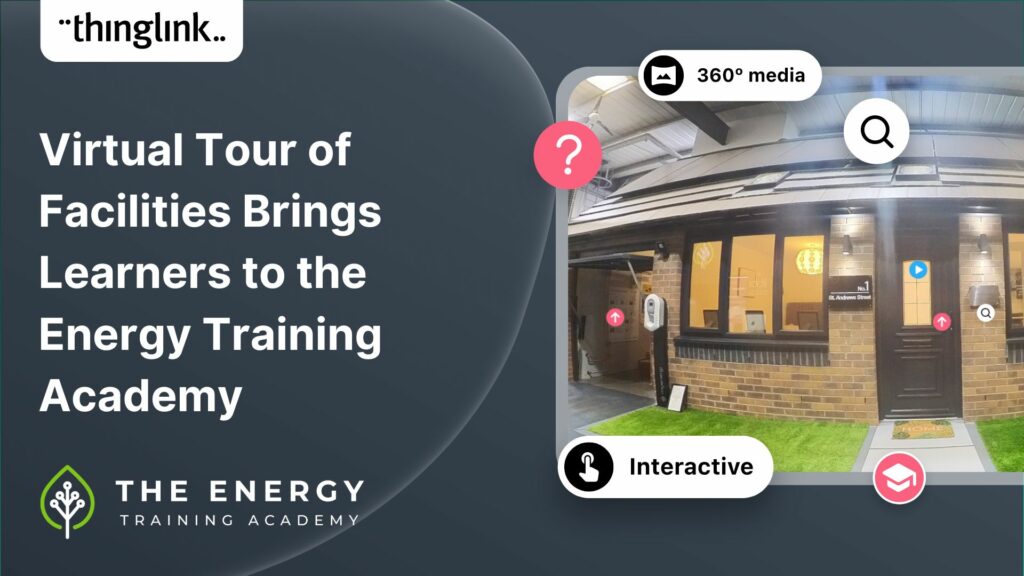
Virtual Tour of Facilities Brings Learners to the Energy Training Academy
In this case study we explore how an innovative training provider is using ThingLink to help attract and develop the next generation of heating engineers ready to support a renewable energy future.
Critical training requirements in the energy sector
As experienced directors of their own heating company, Andrew Lamond and Mark Glasgow were becoming alarmed by the growing shortages of heating engineers in Scotland.
In particular, they had noticed a concerning decrease in young engineers entering the profession. For example, only 6% of gas heating engineers in Scotland are under 35%. They realised that without drastic action, these numbers would soon reach critical levels. They also recognised that the speed and volume of developments in the renewable energy sector required regular and frequent refresher training – both for new engineers and for those already established in the profession. New heating technologies and updates were being developed so quickly that in some cases, training materials could be almost out of date before they were published.
Book a free consultation
If you’d like to learn more about how your company, college or technical school can save resources and effectively support learners with scalable XR and impactful training, schedule a free call with our Enterprise Executive.
The Energy Training Academy is launched
To try to combat this unsustainable situation, Andrew and Mark founded The Energy Training Academy (ETA) in 2021. The ETA is a Community Interest Company, a type of social enterprise company which exists to benefit the community. As such, any profits are reinvested into training programs and into supporting the local community. Their vision was to encourage more young people to join the industry and to provide vocational training programs and courses that covered the very latest in gas heating technology. To ensure that industry skill sets were future-proofed as much as possible, their courses also had to teach in-demand technologies and vocational skills within the renewables market such as heat pumps and solar energy.
The Net Zero Home
Whilst developing their new premises, they saw the potential for installing a model house to demonstrate the latest in net zero and renewable energy appliances, design and technology. The Net Zero Home (NZH) was created inside the ETA’s facility building and is a multi-purpose resource, equipped with a range of technology much of which was provided free of charge by the manufacturers. It fulfils a number of overlapping purposes.
The NZH acts as an educational resource for children and young people to learn about energy efficiency, inspiring them to pursue careers in energy and renewables. It also serves as an informative resource for various sectors, helping to address the challenges associated with retrofitting existing buildings via real-life examples and solutions. Finally, it’s also used to enhance the ETA’s own training courses by providing trainees with hands-on experiences and practical skills in various areas in a realistic setting.
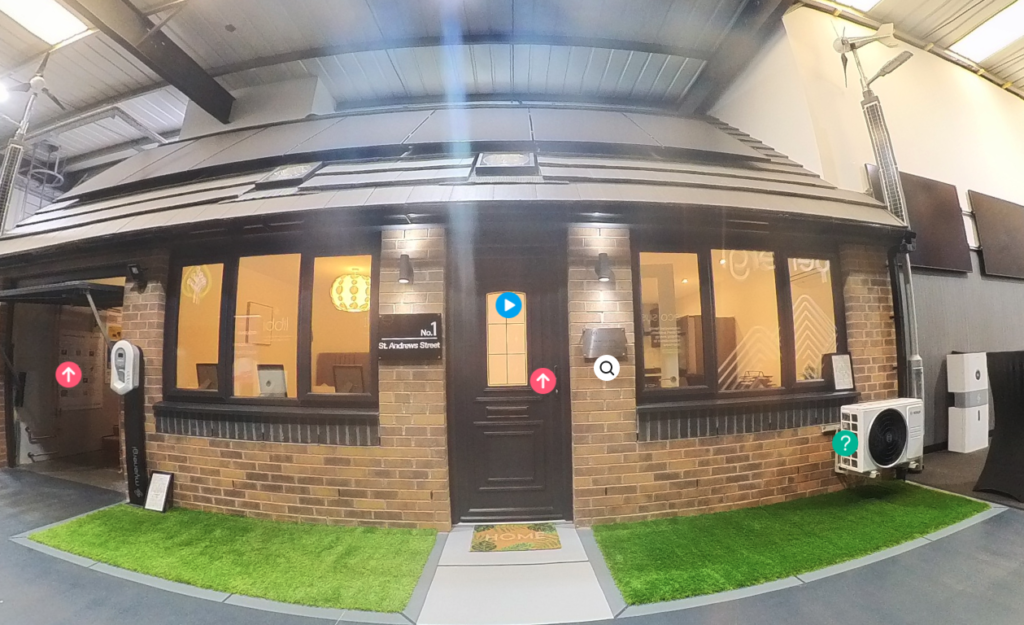
Virtual visit extends the reach of the Net Zero Home
The NZH received a great deal of interest when it was launched, however the team at ETA were keen to extend its reach even further. Having seen ThingLink in action at a local college, Andrew saw the potential in creating a virtual visit using the platform that could be shared publicly. To create the tour, he simply used his own 360 camera to capture spherical images of each room. He then used ThingLink to create a tour between the parts of the house, adding tags to explain each key feature within the home.
The Virtual Tour is now embedded in the ETA website for anyone to explore, and has also been sent to schools as an educational material. It remains a very high profile and widely shared resource, with its reach proven by the number of industry professionals who are familiar with it and have used it as a point of reference.
Benefits of the NZH Virtual Tour
- The tour has been extremely popular with schools, both locally and further afield, as it acts as a valuable alternative to costly and often logistically complicated visits. Pupils can explore from their own classroom, with teachers developing learning experiences based on the tour content. In fact some schools who have already used the virtual tour have planned an additional real-life visit having seen how much technology is available to view.
- It has created opportunity for knowledge-sharing, design and technology ideation and collaboration within the energy industry.
- It has promoted the concept of renewable energy training in general, and the skills training provided by the ETA.
- It has acted as a valuable marketing tool for the ETA by increasing real-life visits by industry members and potential trainees.
Virtual tour expanded to showcase the entire ETA facility
The success of the virtual NZH prompted Andrew to create a second tour, this time to encompass the entire facility. Online visitors can explore the various rooms and training environments. Explore the tour of the ETA below.
Benefits of creating the wider facility virtual tour with ThingLink
- Promotes the ETA as a cutting edge provider of training and provides a point of difference when comparing training providers.
- Logistics and planning: trainees can also use the tour to check other details such as accessibility and parking, as well as what to expect once they arrive.
- Another key benefit of creating virtual tours with ThingLink is the ease of updating them as the house and the wider training facility evolves over time. As the ETA update their training areas and the NZH with new layouts and technologies, these can easily and almost instantly be updated on the virtual tours by quickly swapping in the background 360 images when any changes to the facility are made.
It is also worth noting that Andrew had never previously used ThingLink; this was his first virtual tour – testament to the benefits of ThingLink’s ease of use and simple interface.
The Energy Training Academy: pioneering heating engineer training
The ETA plan to use ThingLink to develop their online training offer even further.
This scene below demonstrates one approach being developed for the boilers and other technologies in the ETA, in which individual appliances are “opened”, explored and explained in detail via images, videos, 3D models and text. See the example below for this in action.
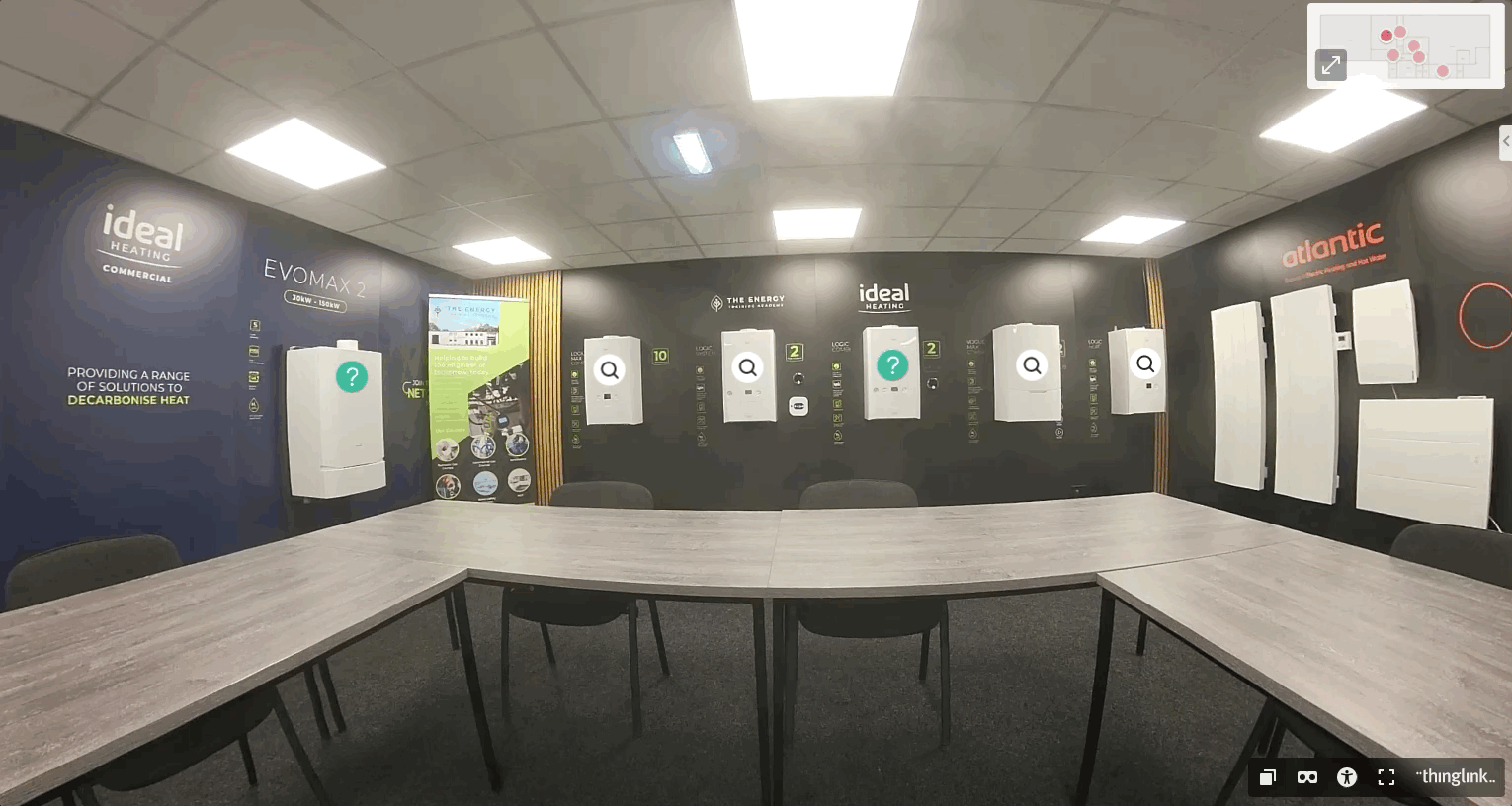
Virtual Escape Rooms and gamification of training
Virtual Escape Rooms will test trainees’ knowledge, competencies and skills by asking them to answer a series of questions correctly before they can “escape” the training room or house. The gamification of the learning process will not only add an extra layer of differentiation and interest to the trainees, but will provide valuable insights into how the trainees are retaining and applying their new knowledge and skills in a realistic and pressured environment. This will allow the ETA to further tailor and develop their training
They are also planning consumer- and community-facing educational and technical training content using ThingLink. Their vision is for homeowners and tenants to be able to access troubleshooting information and technical guides to heating appliances in their own homes, via the ThingLink AR App and simple QR codes. This will allow them to diagnose and resolve simple heating issues and carry out routine maintenance such as bleeding radiators without the need for a plumber or electrician to be sent out. This will cut costs, save time and avoid escalation of minor issues for both home owners and social housing bodies.
Engaging and interactive training
“At The Energy Training Academy, one of our key objectives is to inspire and educate young people about energy efficiency, the path to Net Zero, and the diverse career opportunities within the renewables sector. ThingLink enables us to virtually bring hundreds of schoolchildren into the academy, making our energy efficiency training both engaging and interactive. Through this technology, we aim to make learning about energy exciting and accessible, developing a deeper understanding of the urgent need for a transition to a Net Zero future.”
Andrew Lamond, Director, Energy Training Academy
Further articles and case studies you may be interested in:
How Mitsubishi Electric is Creating Innovative VR Training with ThingLink – with their trainers in high demand, VR training allows MEUK to deliver their professional development and product training programs to employees at scale, and cost-efficiently.
KAESER’s 360 Virtual Tours Provide a Unique Way for Customers to Explore Products Remotely – this American compressor manufacturer provides 360 views of their enclosures for customers and sales teams.
How Vaisala is Attracting a New Generation of Talent With Virtual Tours of Their Extraordinary Campus – allowing high school students and potential applicants a better understanding of job roles and career paths at their global HQ
ThingLink’s New AR App Helps Keep Water Flowing – on the job training and device troubleshooting made easy with ThingLink’s creator-friendly, user-friendly mobile app.
ThingLink for Vocational Schools and Technical Education
ThingLink is widely used in further and higher education programs around the world. It is particularly popular with TVET (Technical/Vocational Education and Training) Colleges and Trade Schools that provide job training programs and work experience in conjunction with future employers. Trainers and educators can collaborate with employers to create realistic training scenarios that provide site- and job-specific training in technical skills development. This Case Study from Gradia is just one example of this approach where students are prepared for job placements and internships using virtual tours, scenarios and simulations.
In this case study from Finland, students were able to explore a realistic 360-degree workshop environment. Familiarization with how the individual machines worked and were safely operated prepared them for the new skills they would be learning during their hands-on training.
In the healthcare sector, a 360° immersive learning resource built with ThingLink is helping prepare student nurses for international clinical placements. For students whose first language is not English, ThingLink’s built-in tool allows almost instant translation of learning content.
